Transitional Style Home Interior Design
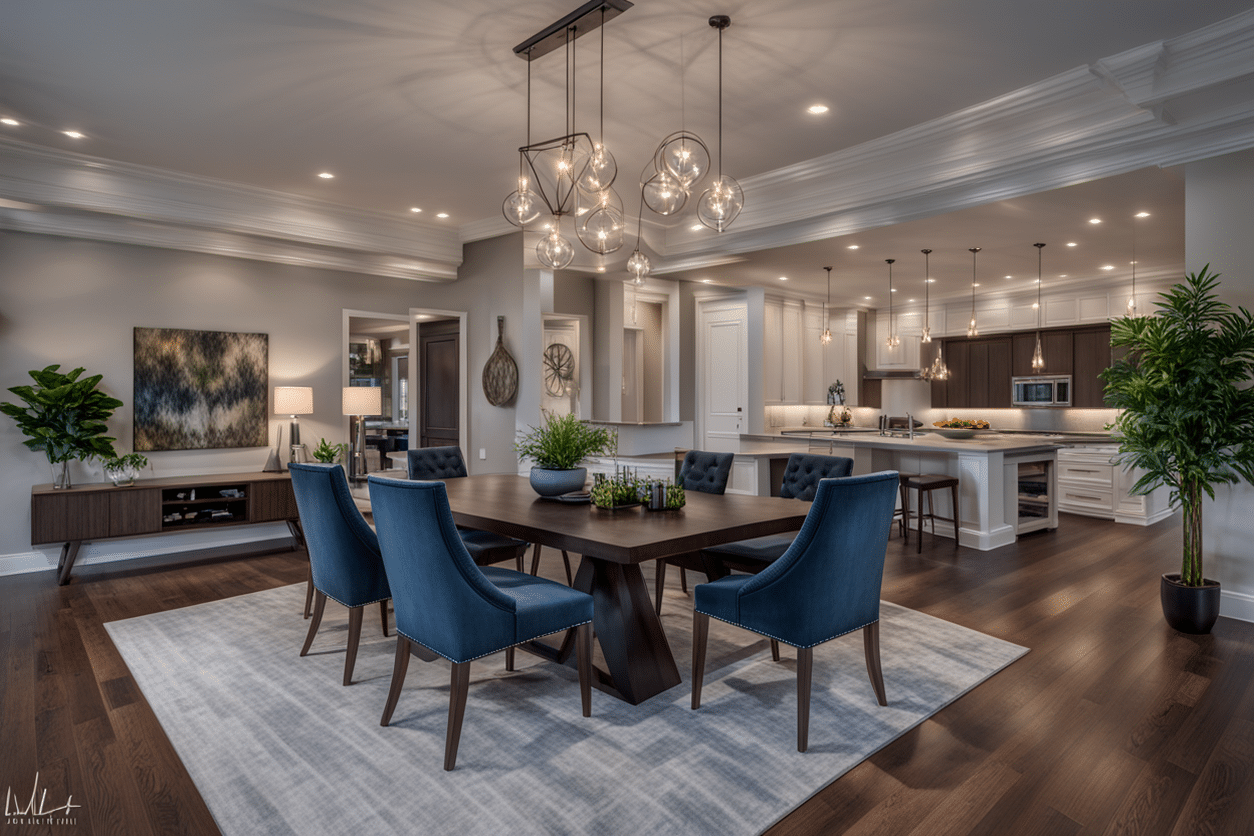
Transitional style has become a favorite among homeowners seeking a harmonious blend of classic elegance and modern simplicity. Let me share my journey in mastering this timeless design approach and how you can effortlessly incorporate it into your home.
Podcast Discussion of Transitional Style Design

Understanding Transitional Style
Transitional style seamlessly merges traditional and contemporary elements, creating a balanced and sophisticated aesthetic. It’s all about finding that sweet spot between comfort and elegance, ensuring your space feels inviting and stylish.
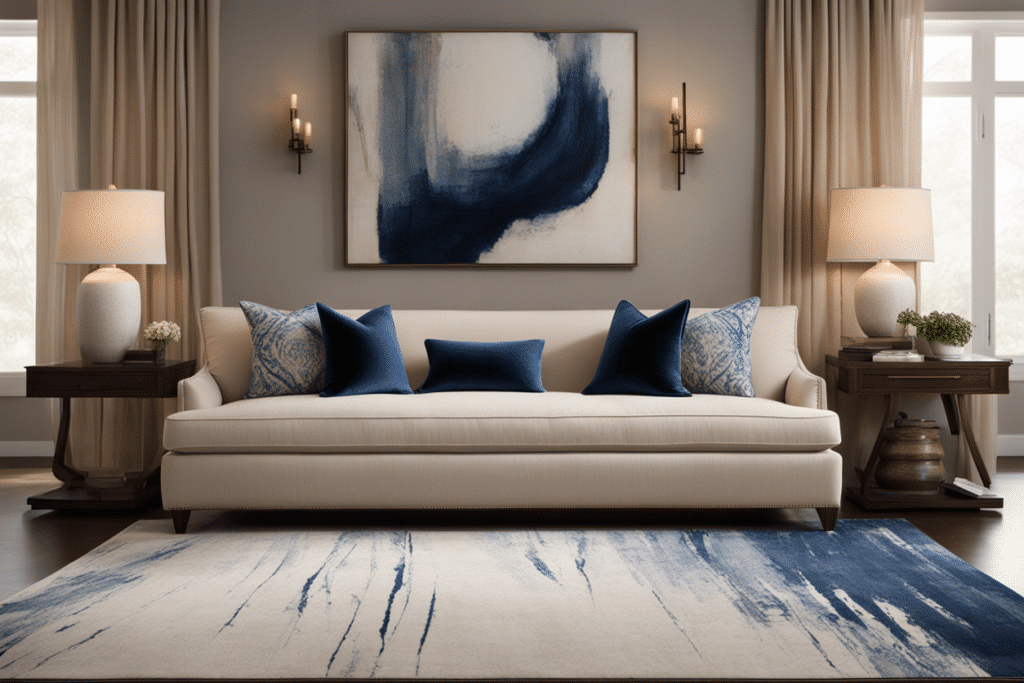
Core Principles
- Balance and Harmony: Achieving a perfect equilibrium between old and new.
- Neutral Palette: Utilizing colors like whites, creams, grays, and beiges as the foundation.
- Functional Beauty: Prioritizing comfort without sacrificing style.
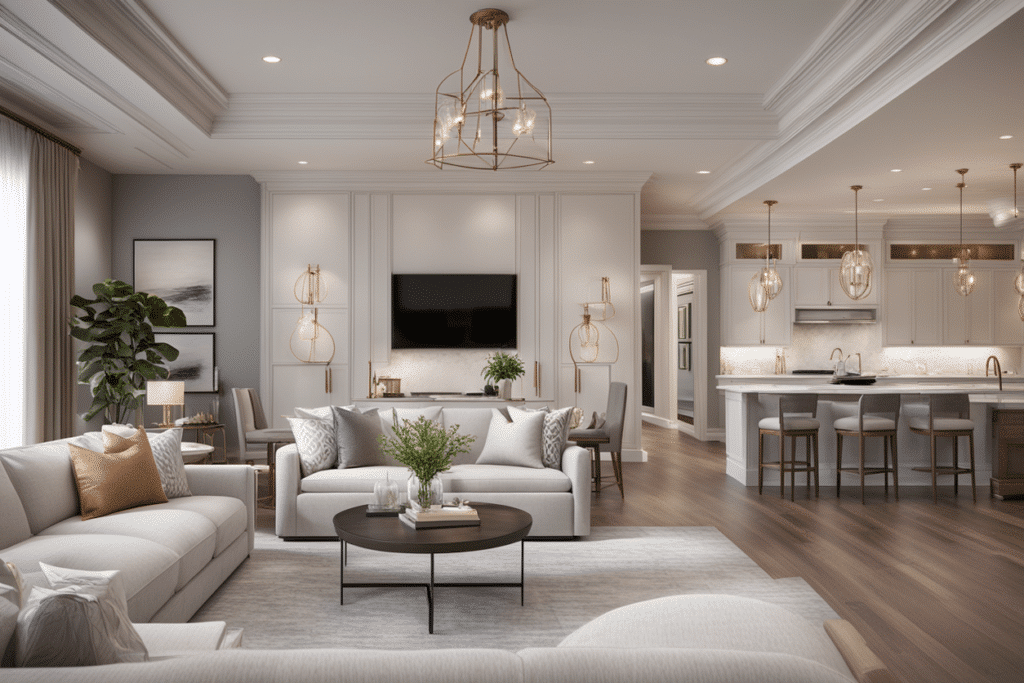
Key Elements of Transitional Style Design
Color Palette
A neutral color scheme is the cornerstone of transitional design. Think soft whites, creamy beiges, and versatile grays. These colors provide a serene backdrop, allowing you to play with textures and layers.
- Base Colors: Whites, creams, grays, and beiges.
- Accent Colors: Deep blues, rich browns, and subtle greens add depth and interest.
Furniture
Transitional furniture strikes a balance between traditional charm and modern sleekness. Pieces typically feature clean lines with subtle curves, ensuring they are both comfortable and visually appealing.
- Styles: A mix of classic and contemporary shapes.
- Materials: Neutral fabrics like linen, leather, or suede paired with wood in light or dark tones.
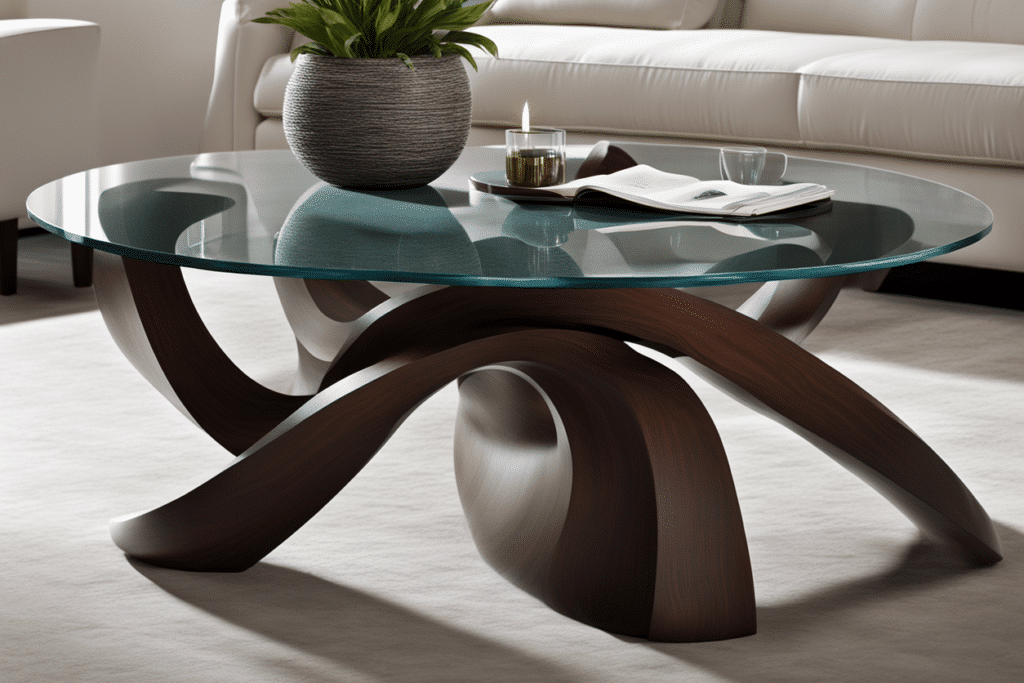
Textures and Materials
Layering different textures is crucial in transitional design. It adds depth and visual interest without overwhelming the space.
- Natural Materials: Wood, stone, glass, and metal.
- Textural Variety: Velvet, chenille, and leather in rugs, pillows, and window treatments.
- Mixing Finishes: Combining matte and glossy surfaces for added complexity.
Accessories and Decor
Less is more in transitional style. Carefully selected accessories can make a significant impact without cluttering the space.
- Artwork: Minimal pieces that blend traditional and contemporary styles.
- Metallic Accents: Touches of brass, chrome, or brushed nickel for a hint of glamour.
- Patterns: Subtle patterns in fabrics or rugs to enhance visual interest.
Lighting
Lighting in a transitional space is a beautiful blend of classic and modern fixtures. It not only illuminates but also serves as a design feature.
- Fixtures: Clean-lined chandeliers, updated sconces, and sleek pendant lights.
- Layered Lighting: Combining ambient, task, and accent lighting to create a versatile and inviting atmosphere.
Architecture and Layout
Open floor plans are typical, promoting a seamless flow between different areas. Classic architectural details like crown molding or wainscoting add a touch of elegance without overpowering the modern elements.
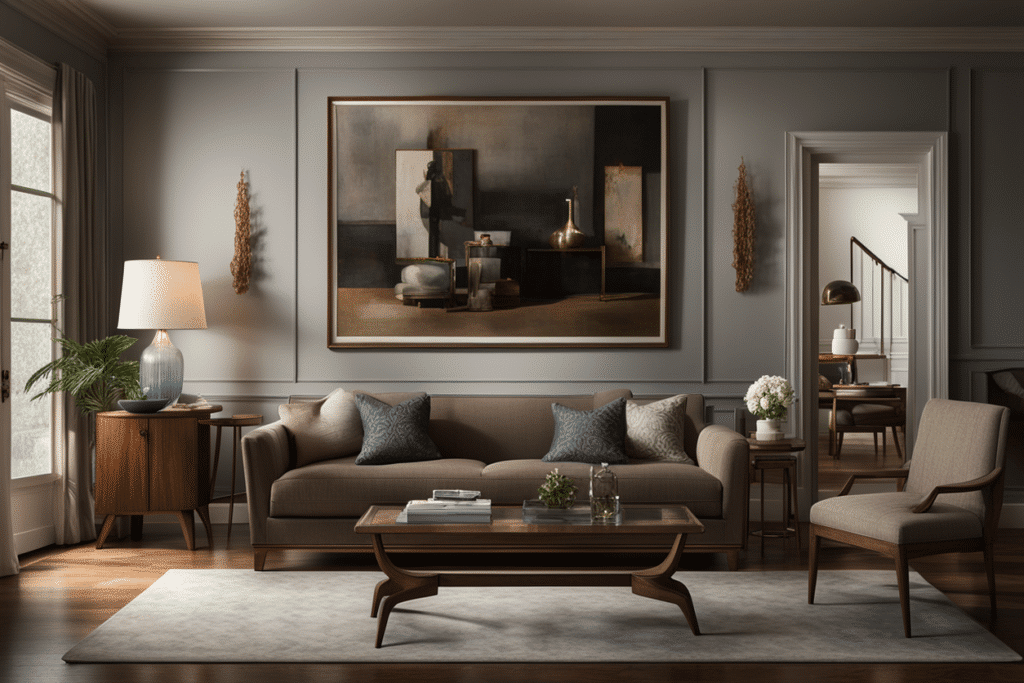
Creating a Transitional Living Room
Comfortable Seating
Focus on furniture that offers both style and comfort. Think sofas and chairs with clean lines and cushioned proportions that invite relaxation.
Statement Lighting
Choose lighting fixtures that stand out as focal points. An elegant chandelier or a modern pendant lamp can elevate the entire room.
Minimal Artwork and Accessories
Select a few standout pieces rather than overcrowding the space. This approach ensures each item has its moment to shine.
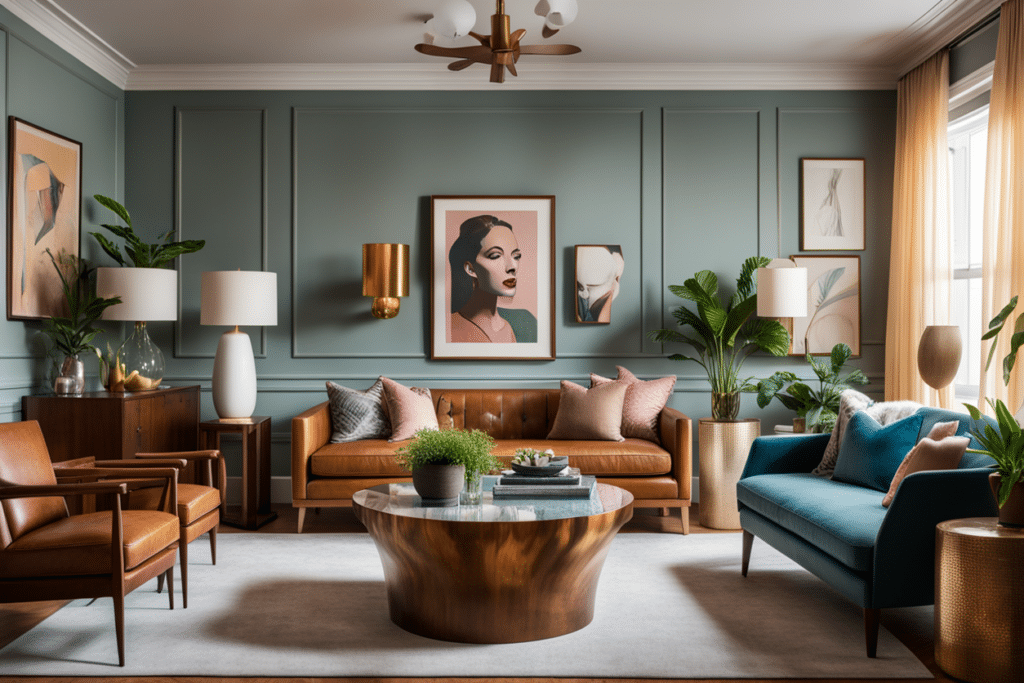
Layered Area Rugs
Rugs add warmth and texture. Layering different rugs can create a dynamic and cozy environment.
Subtle Patterns
Incorporate patterns through pillows, curtains, or rugs, keeping them within the neutral color scheme to maintain harmony.
Blend of Old and New
Mix antique or vintage pieces with contemporary furnishings to add character and a sense of history to your space.
Architectural Details
Incorporate elements like crown molding or a classic fireplace to enhance the traditional aspect of the design while keeping it understated.
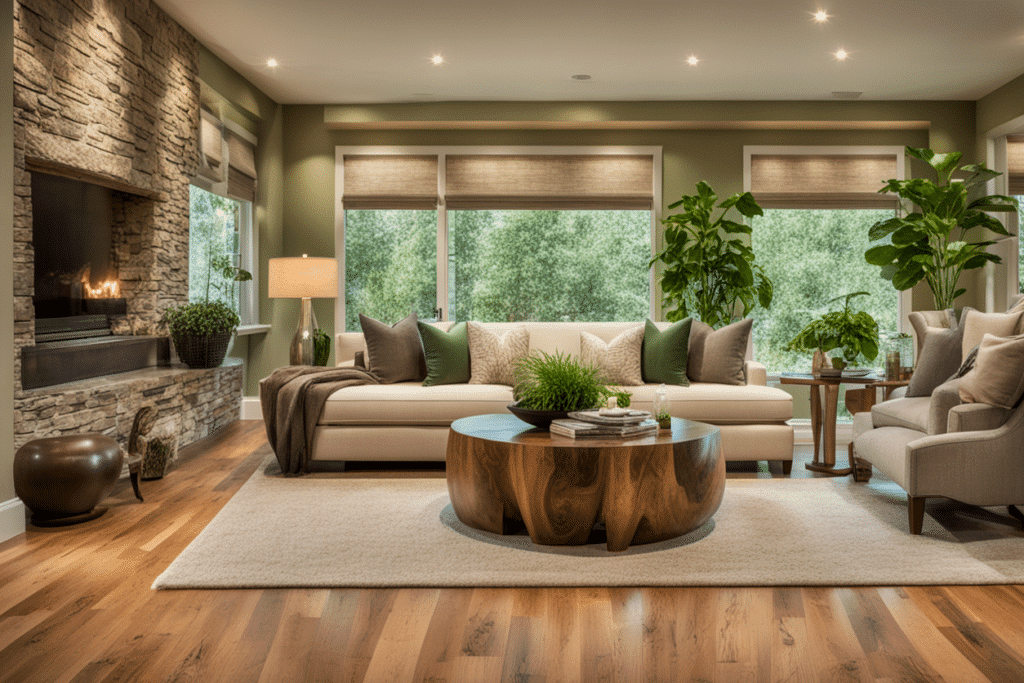
Enhancing Transitional Design with Lighting
Mix Traditional and Modern Fixtures
Pair a classic chandelier with modern sconces to achieve a cohesive look that honors both styles.
Focus on Clean Lines and Subtle Curves
Opt for lighting fixtures that feature simple, elegant shapes with a touch of sophistication.
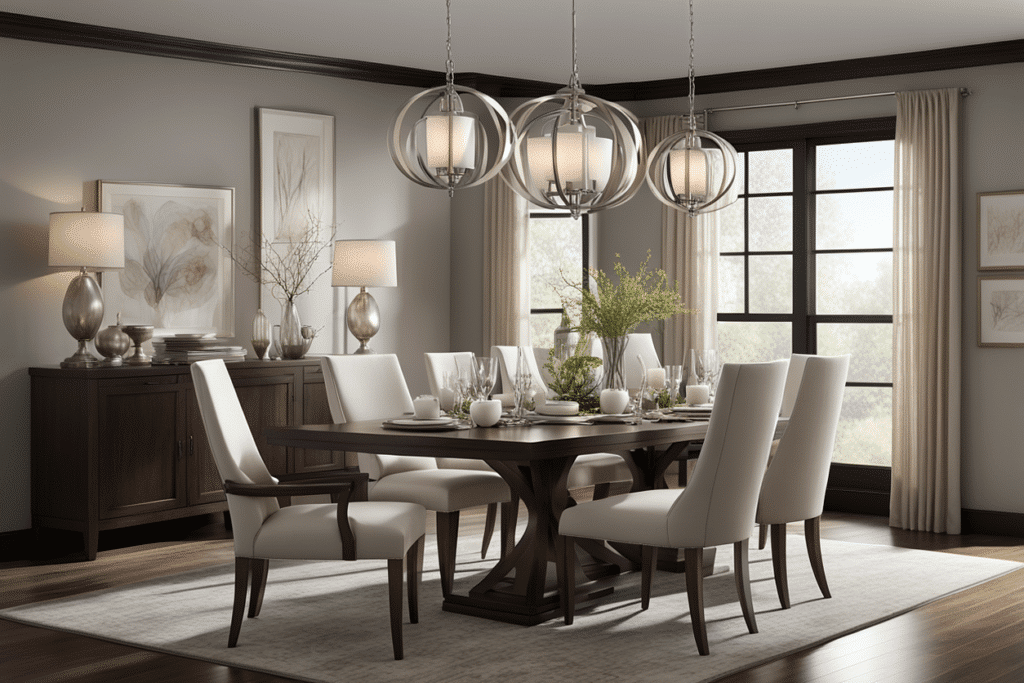
Layer Your Lighting
Creating depth through multiple light sources is essential. Use a combination of ambient, task, and accent lighting to enhance the space.
Emphasize Natural Light
Maximize natural light with sheer window treatments and strategically placed mirrors to reflect light and make the space feel larger.
Choose Transitional-Style Fixtures
Look for lighting that seamlessly blends traditional forms with modern finishes, ensuring they complement the overall design.
Key Takeaways on Transitional Style Interiors
- Neutral Palette: Serves as the foundation, allowing flexibility in textures and accessories.
- Balanced Furniture: Combines traditional and modern elements for comfort and style.
- Layered Textures: Adds depth and prevents the space from feeling flat.
- Minimalist Accessories: Enhances the aesthetic without creating clutter.
- Versatile Lighting: Balances functionality with design, creating a warm and inviting atmosphere.
- Open Layout with Architectural Details: Promotes flow while adding classic elegance.
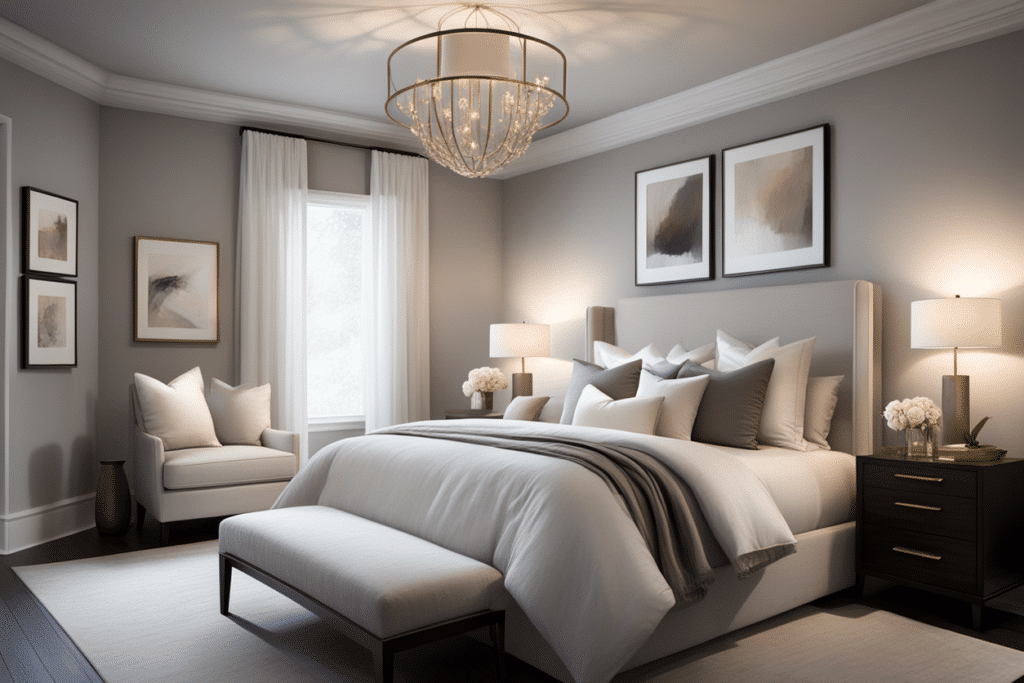
Transitional Style FAQ
What is transitional style in interior design?
Transitional style blends traditional and contemporary design elements, creating a balanced and timeless aesthetic. It combines classic features like crown molding with modern furniture, all within a neutral color palette.
What are the key characteristics of transitional furniture?
Transitional furniture features clean lines and subtle curves, a mix of masculine and feminine elements, and comfortable, functional designs. Upholstery is typically in neutral fabrics like linen, leather, or suede, and wood tones can range from light to dark.
How do I use textures and materials in a transitional space?
Incorporate a variety of natural materials such as wood, stone, glass, and metal. Layer different textures like velvet, chenille, and leather through rugs, pillows, and window treatments. Mixing matte and glossy finishes also enhances visual interest.
What is the role of accessories and decor in transitional style?
Accessories in transitional style follow a “less is more” approach. Opt for a few carefully curated pieces that blend traditional and contemporary styles, include metallic accents for a touch of glamour, and use subtle patterns to add interest without overwhelming the space.
What type of lighting fixtures work best in a transitional interior?
Choose lighting fixtures that combine classic and modern elements, such as clean-lined chandeliers, updated traditional sconces, and sleek pendant lights. Layered lighting, including ambient, task, and accent sources, creates a versatile and inviting atmosphere.
How can I effectively use lighting to enhance my transitional space?
Layer your lighting with ambient, task, and accent sources. Use dimmers to adjust the mood, combine warm and cool light tones, and strategically place fixtures to highlight architectural features and artwork. This approach creates depth and flexibility in your space.
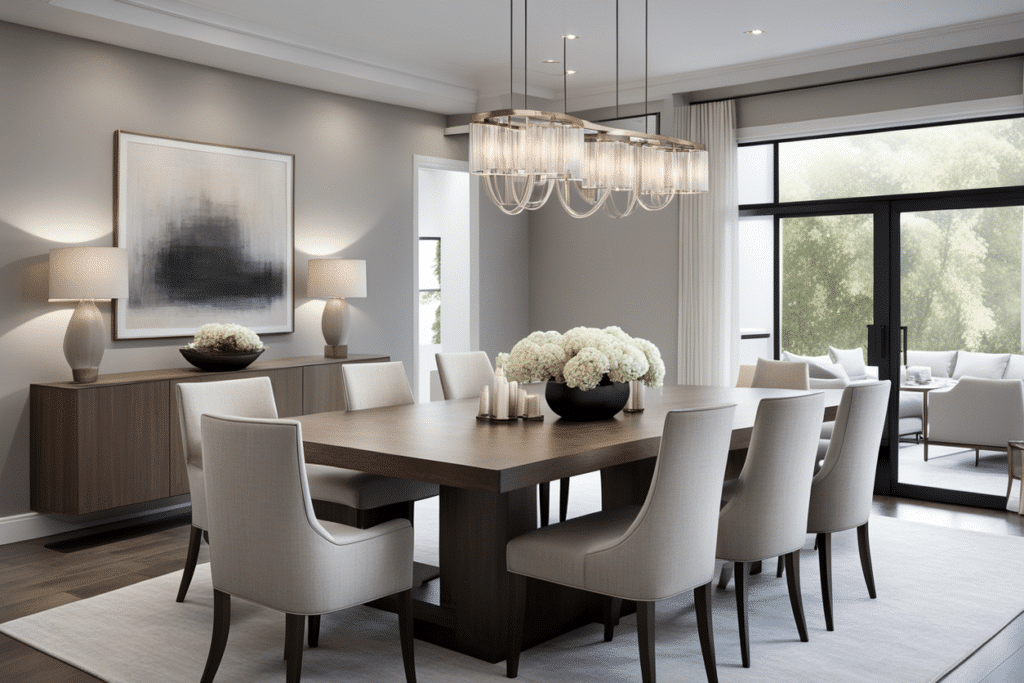
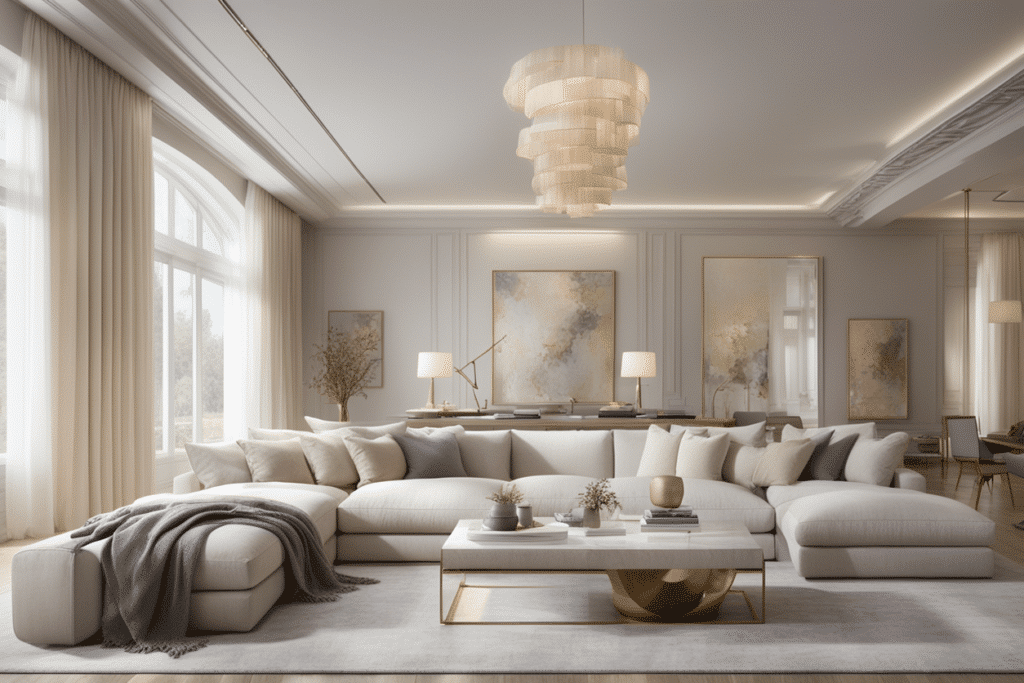
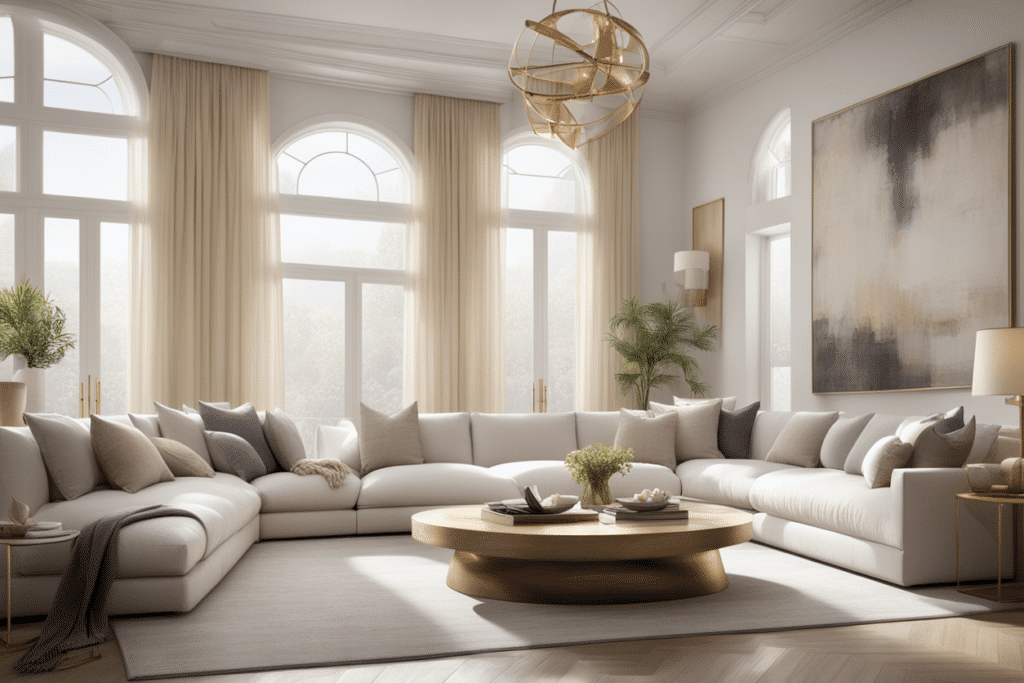
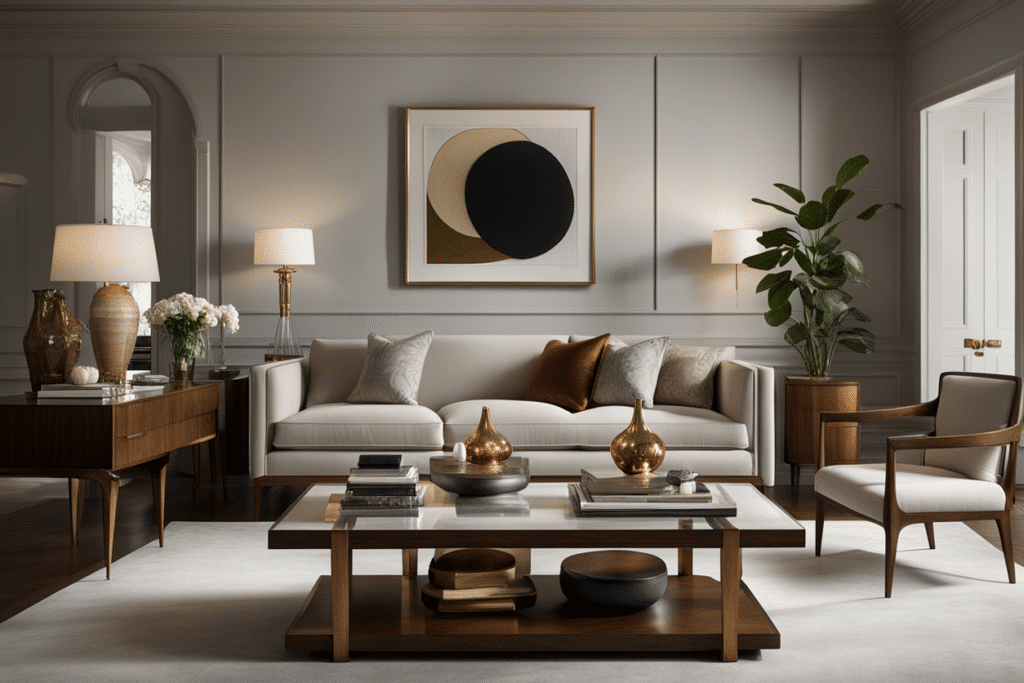
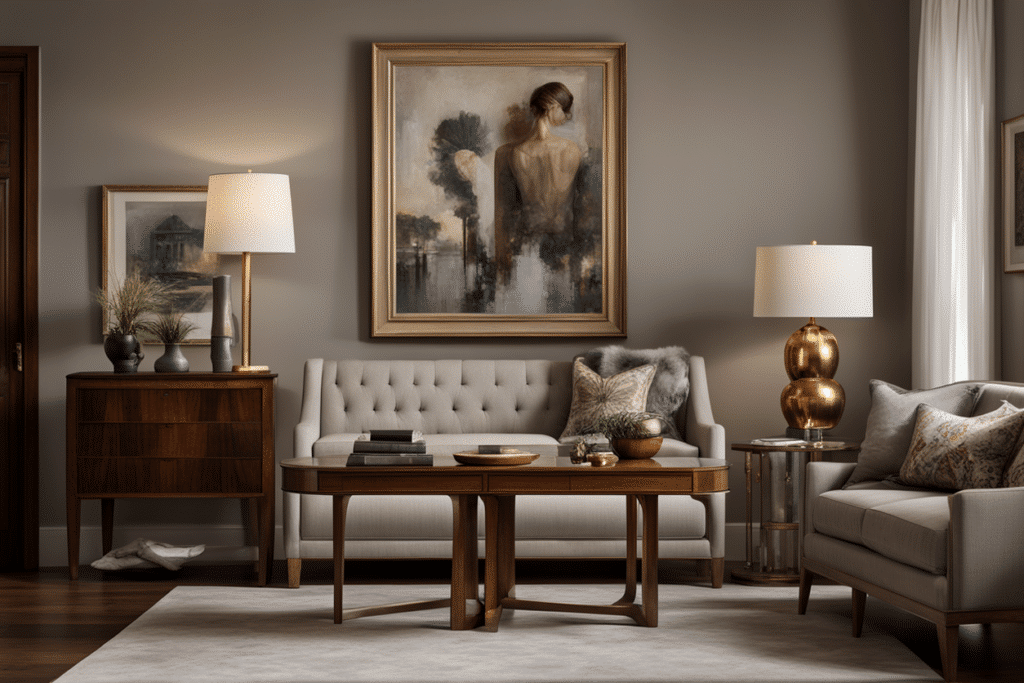

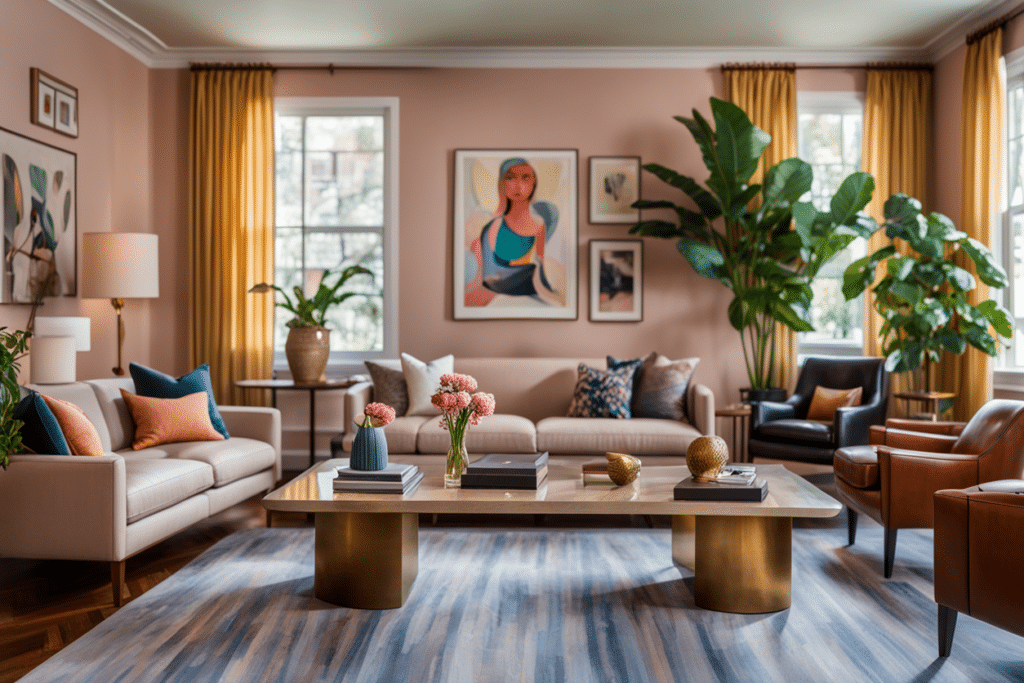
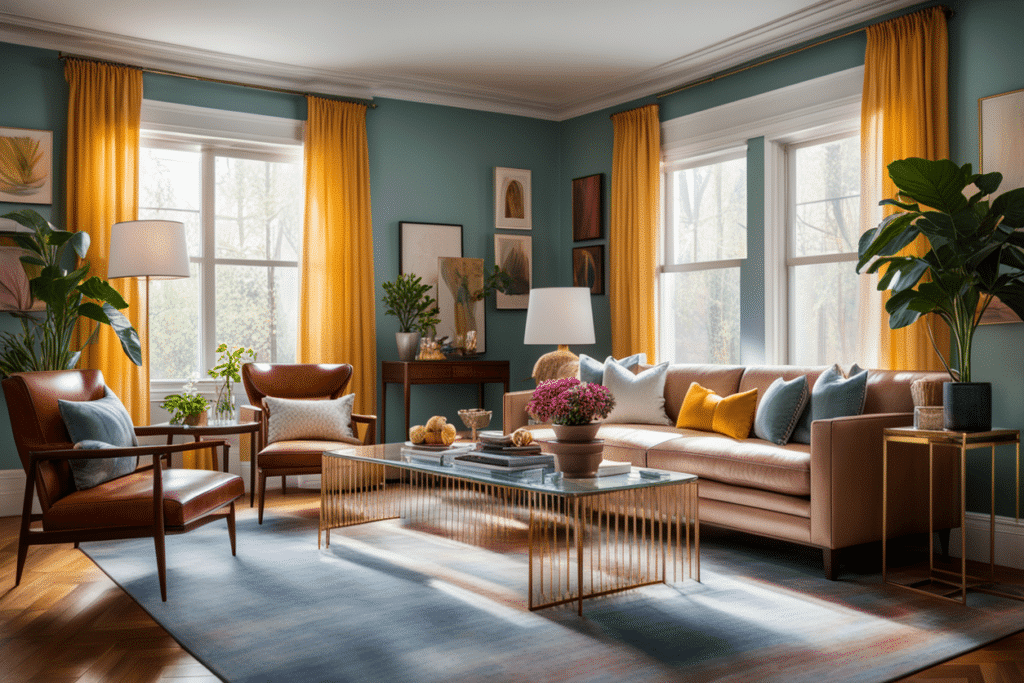
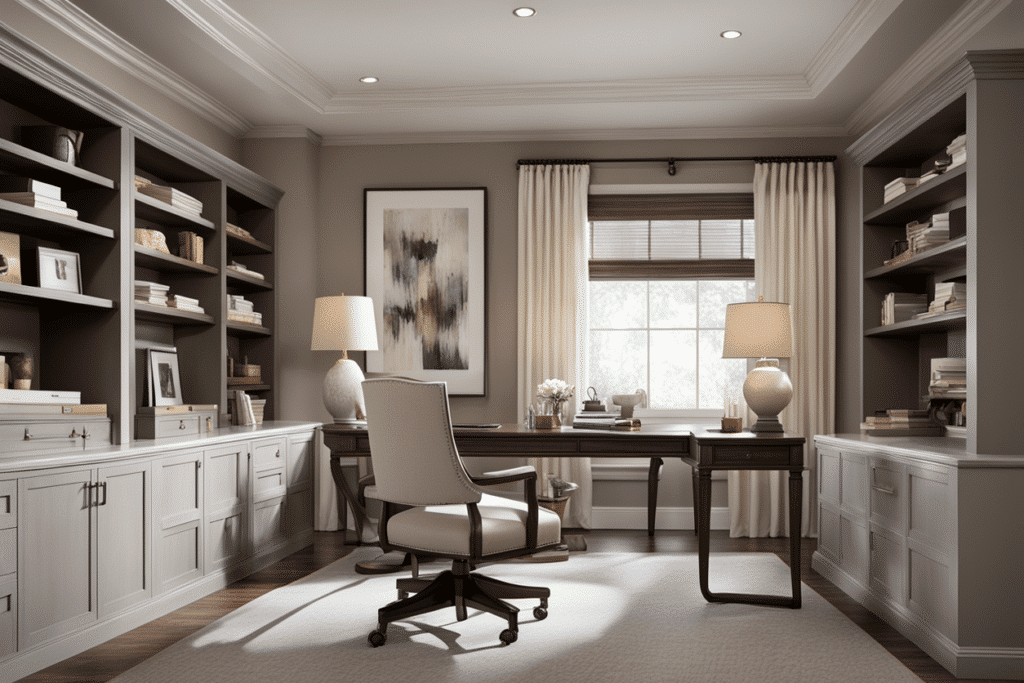
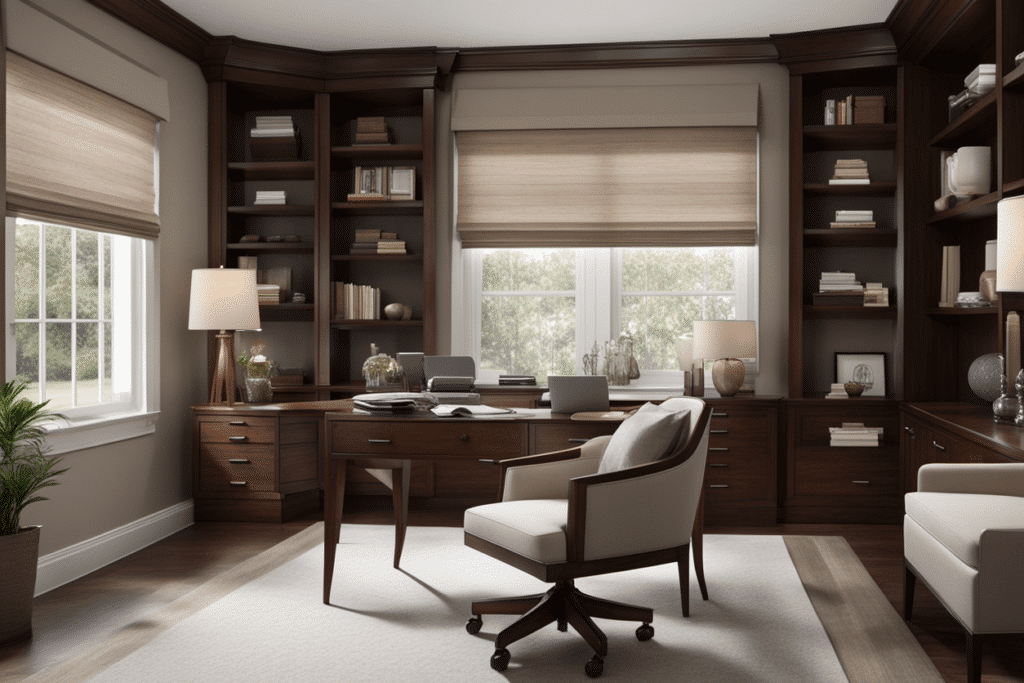
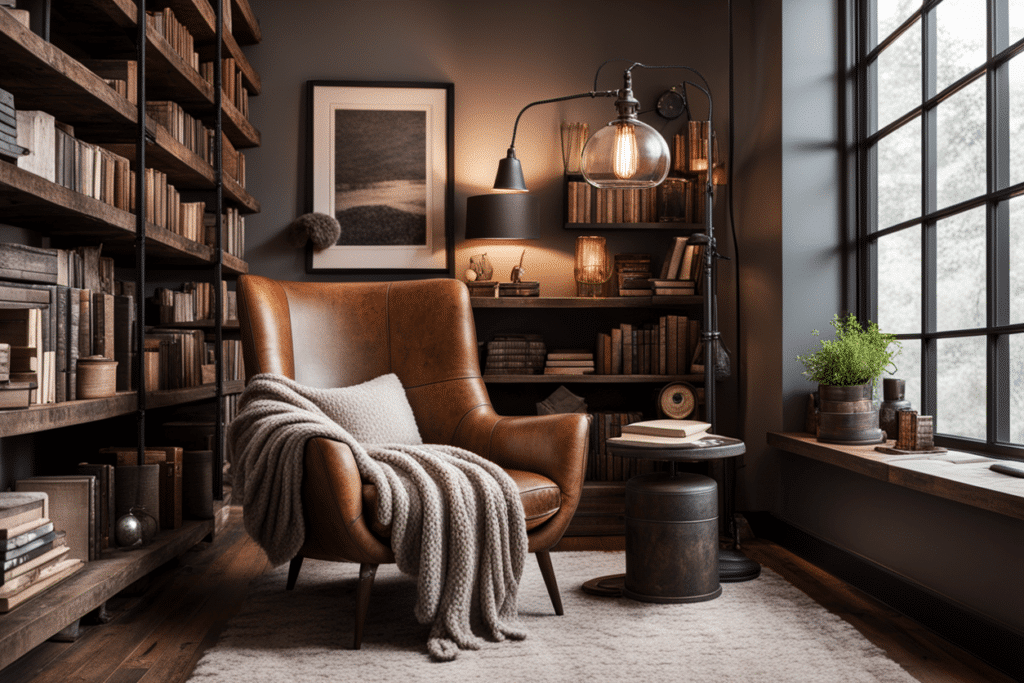
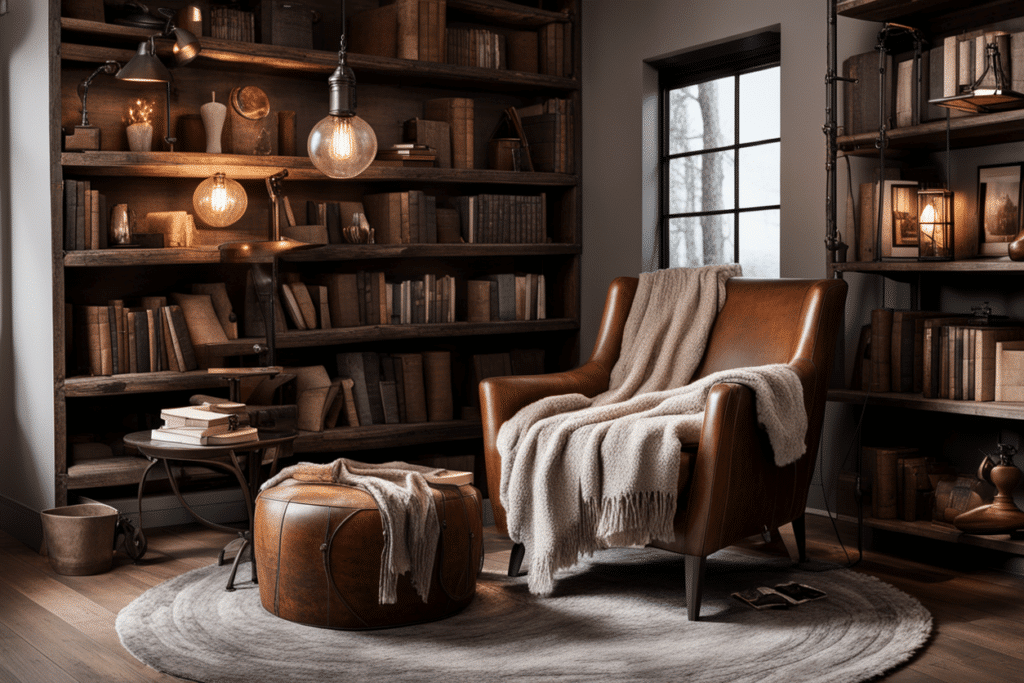
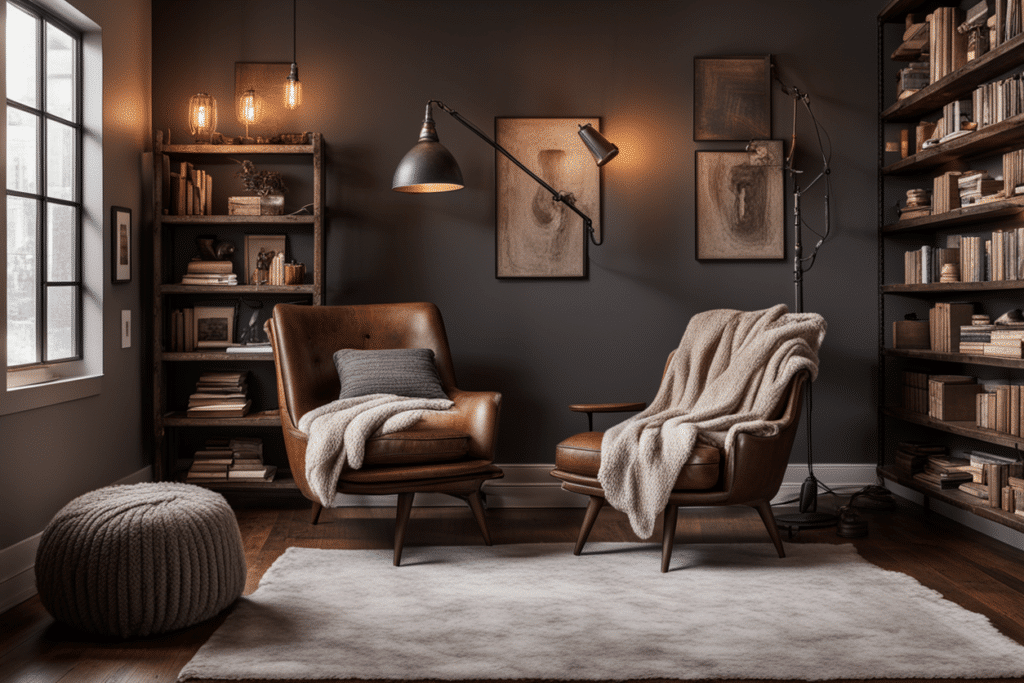
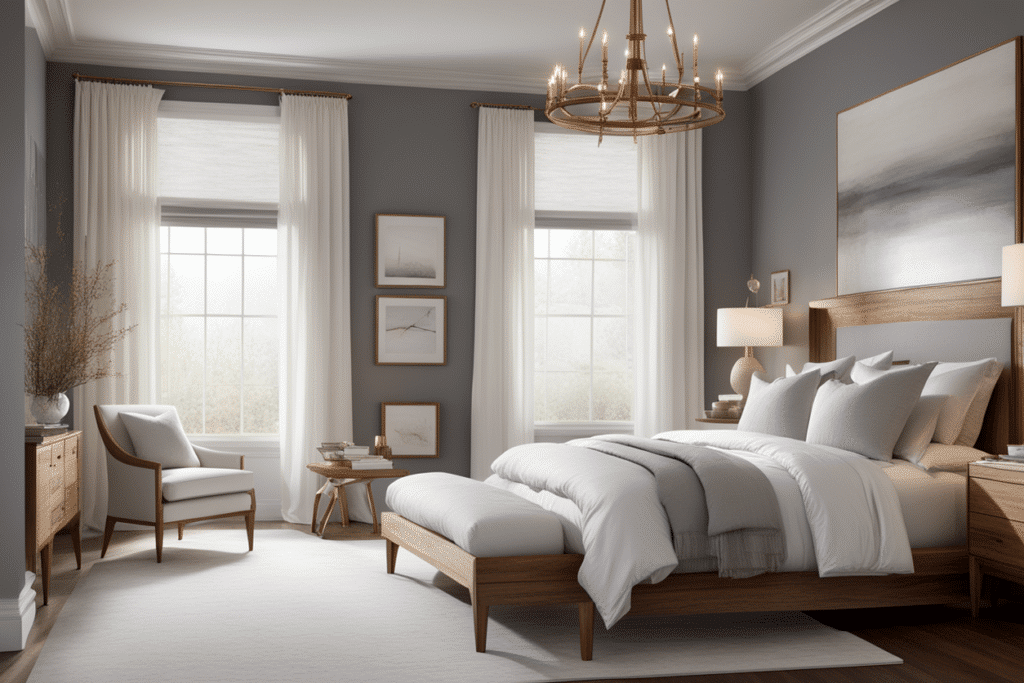
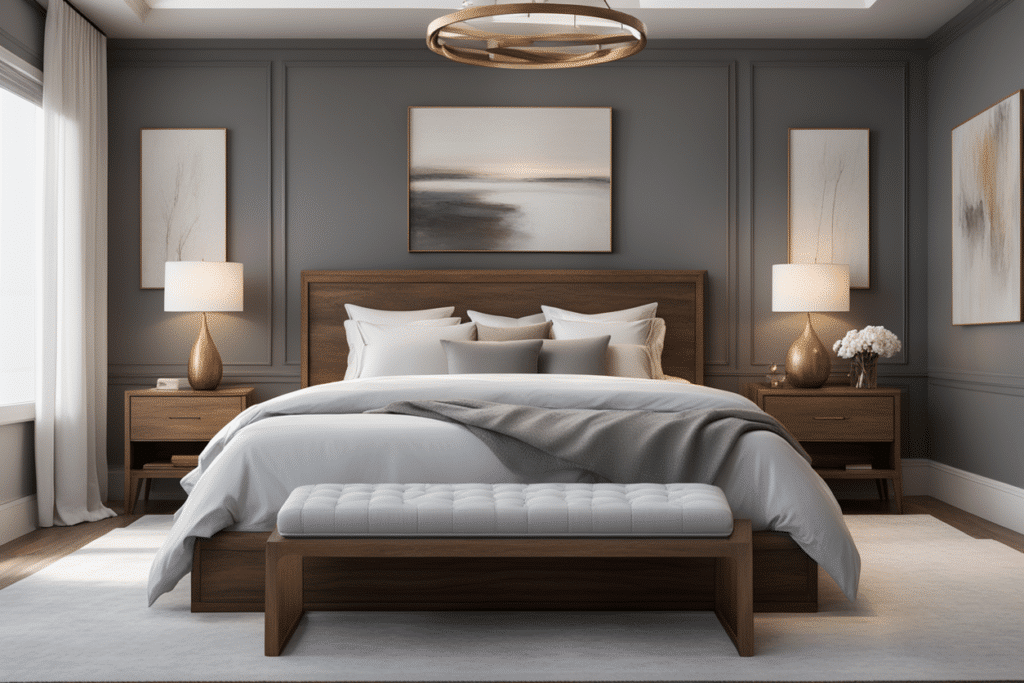
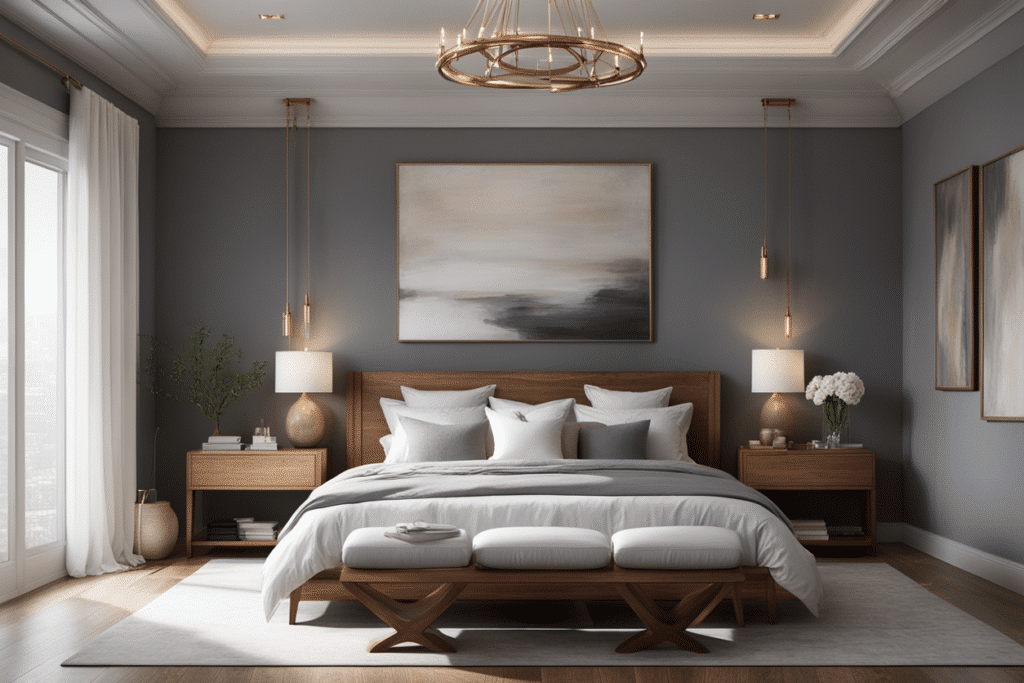
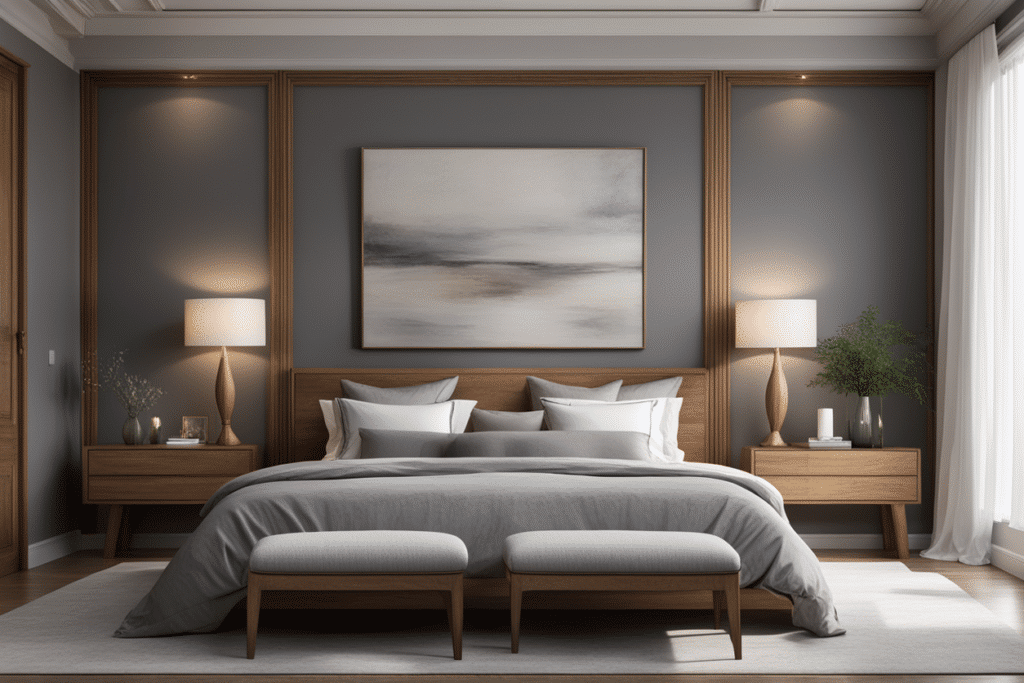
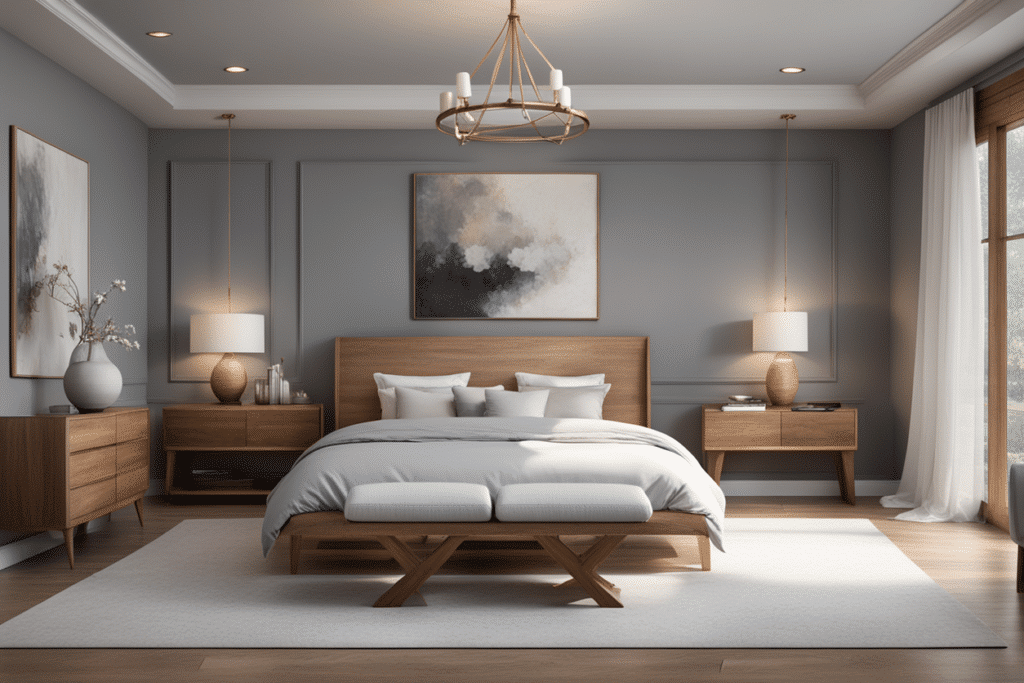
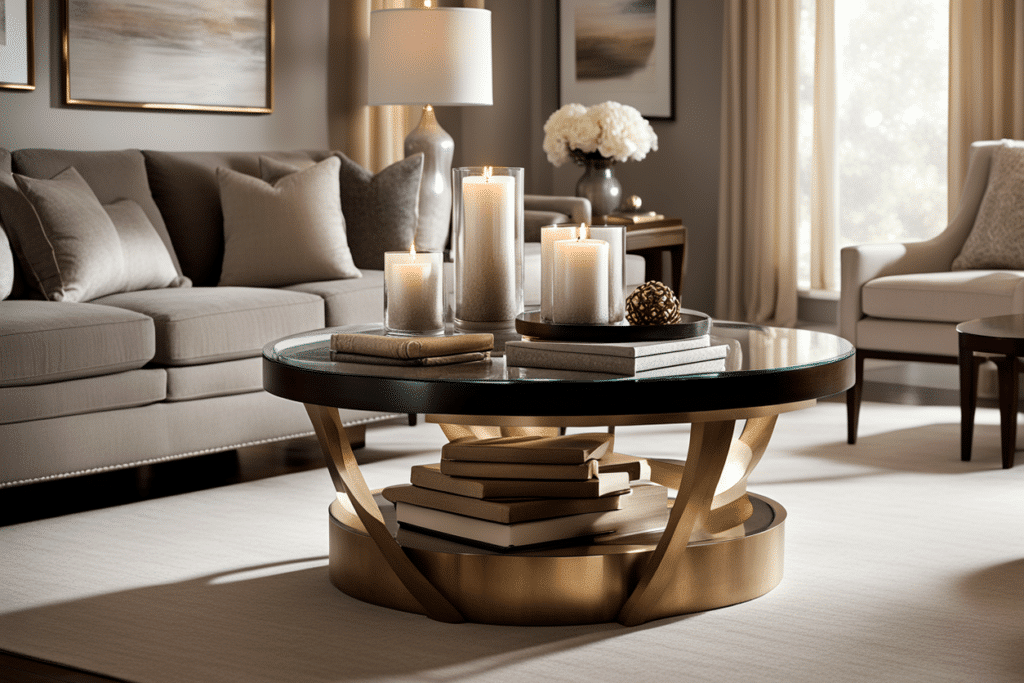
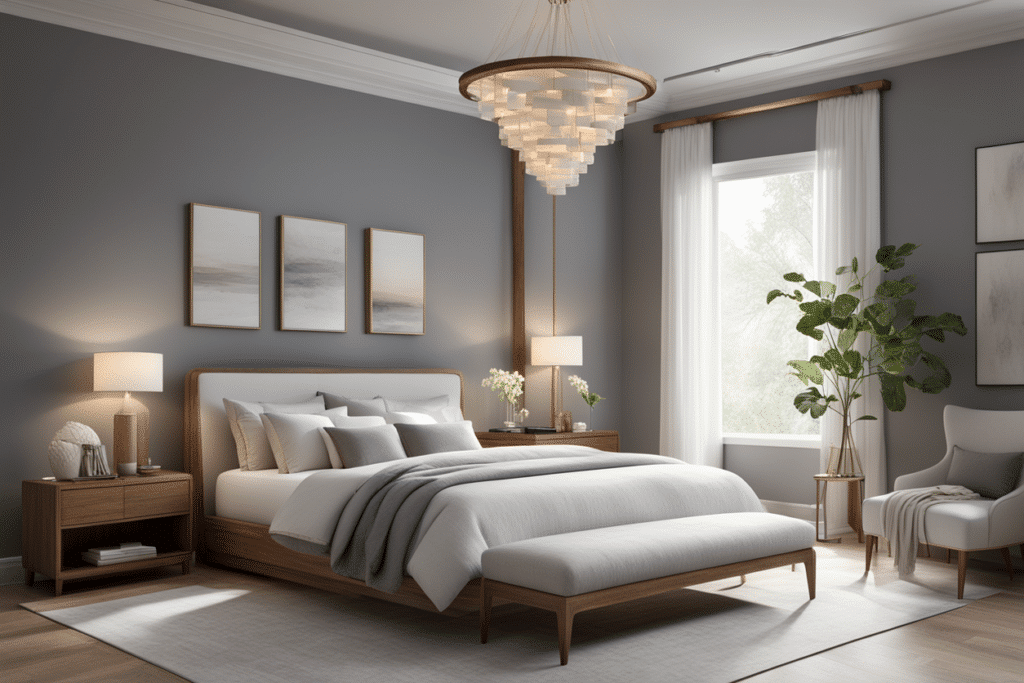
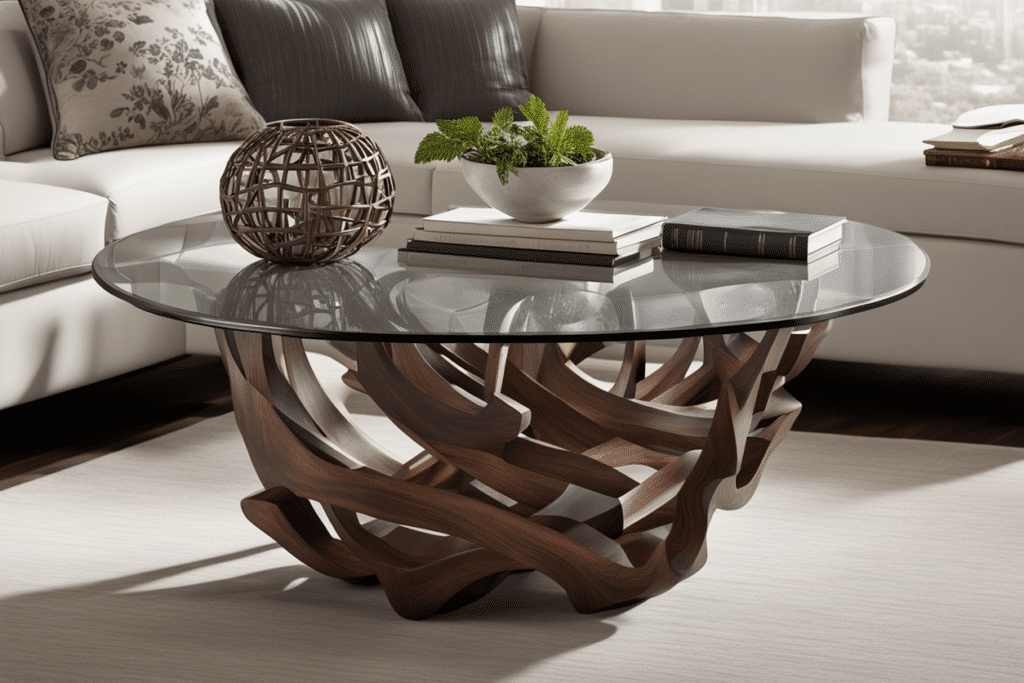

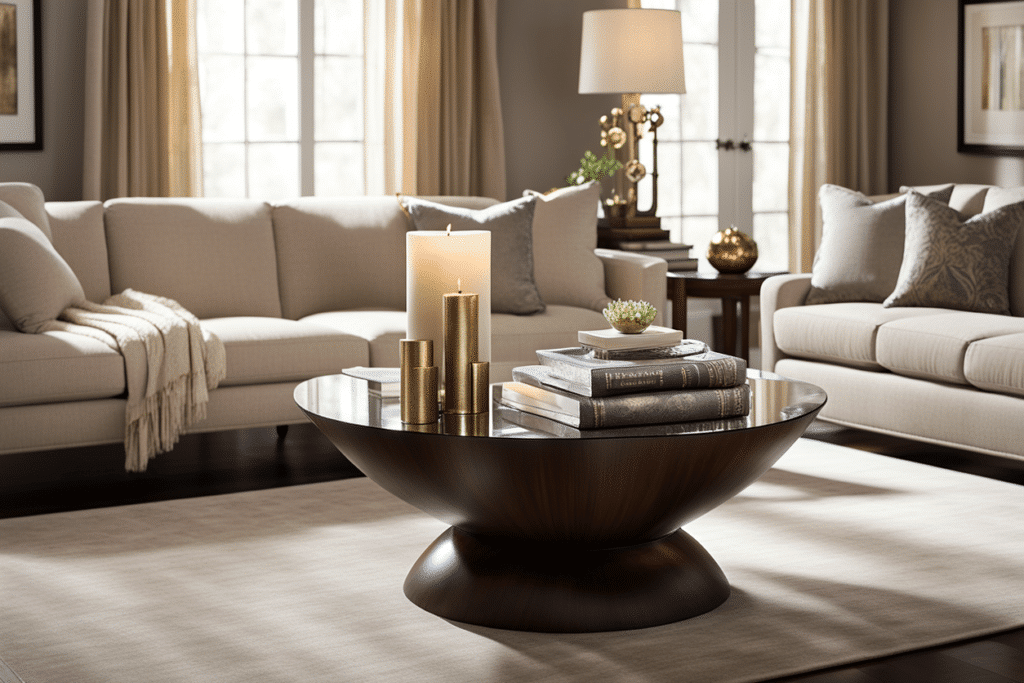
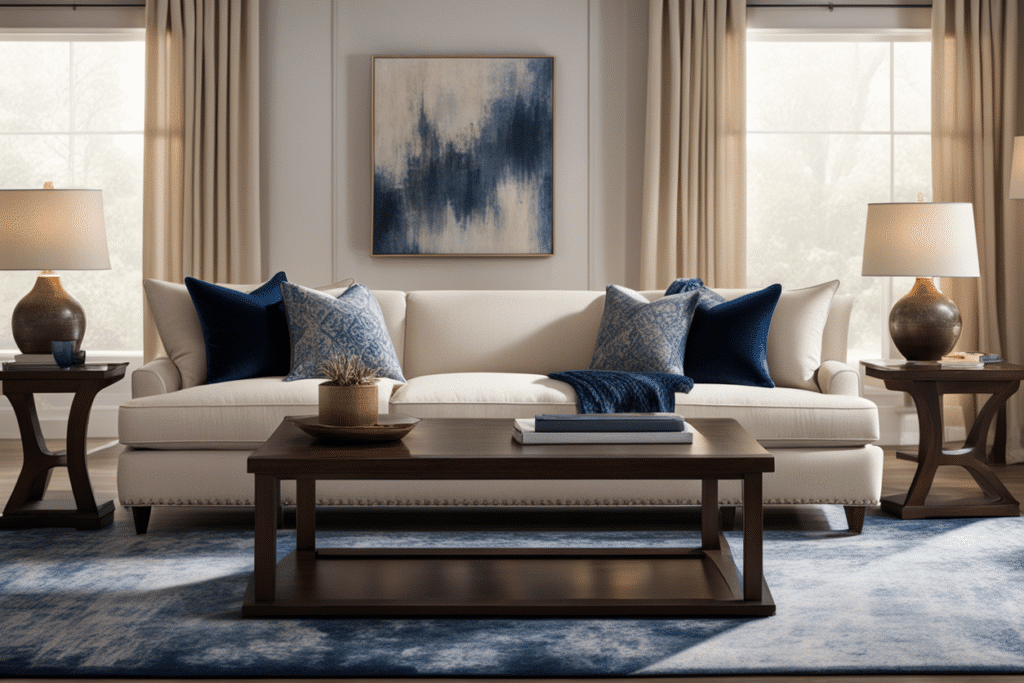
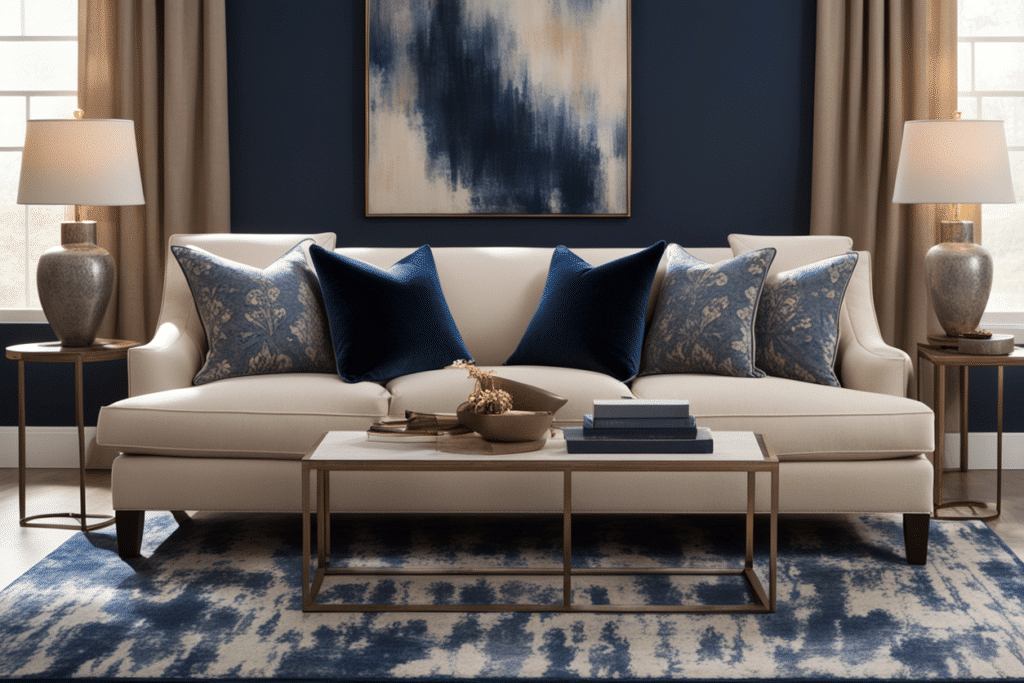
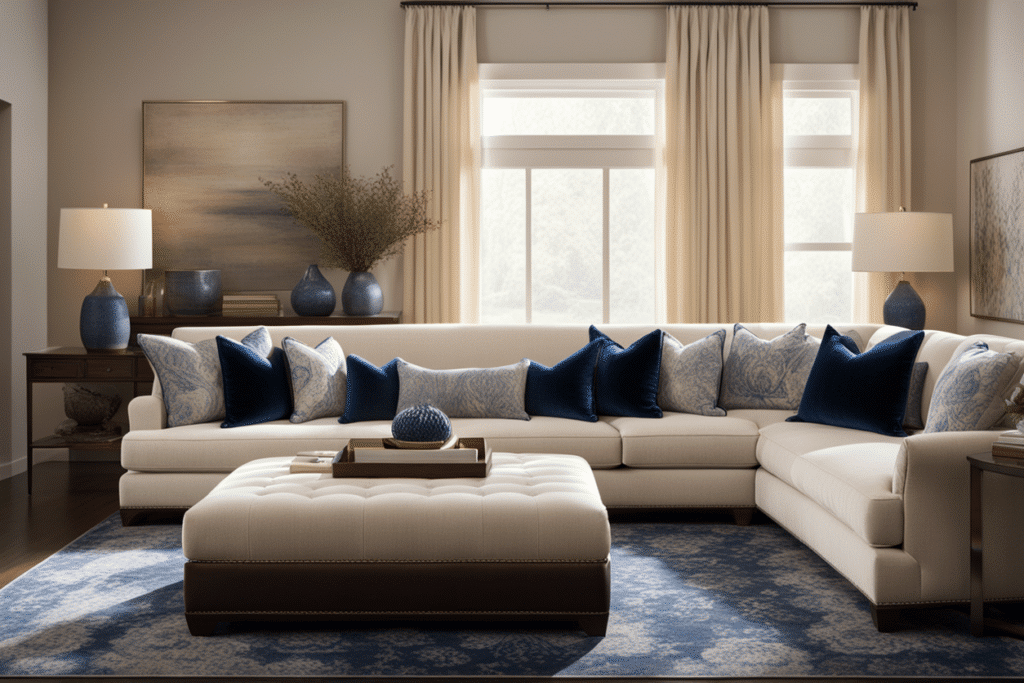

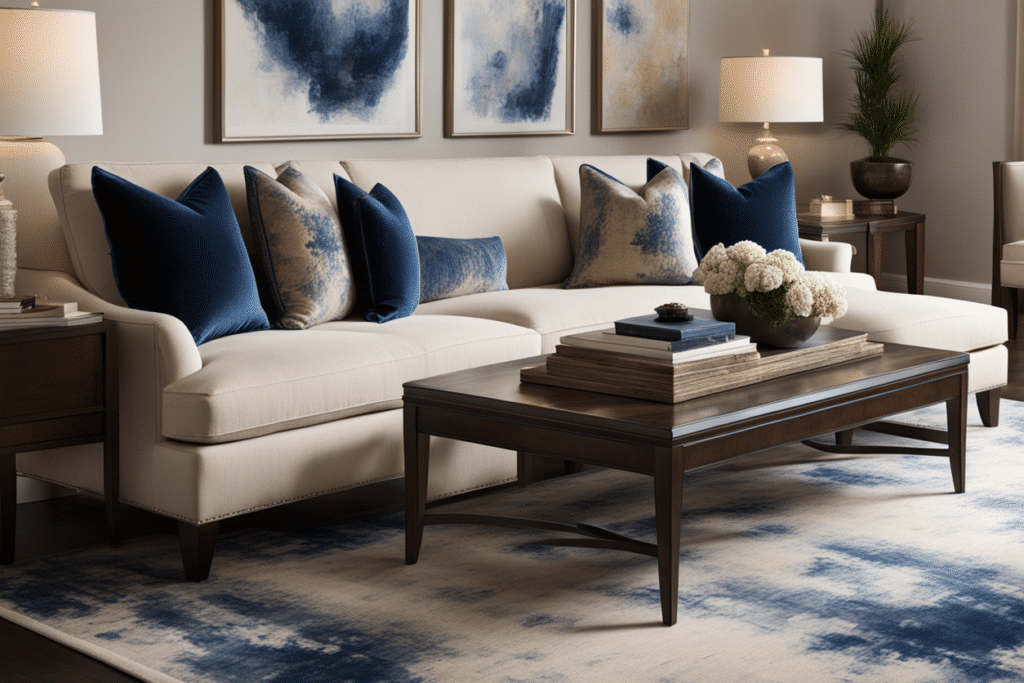
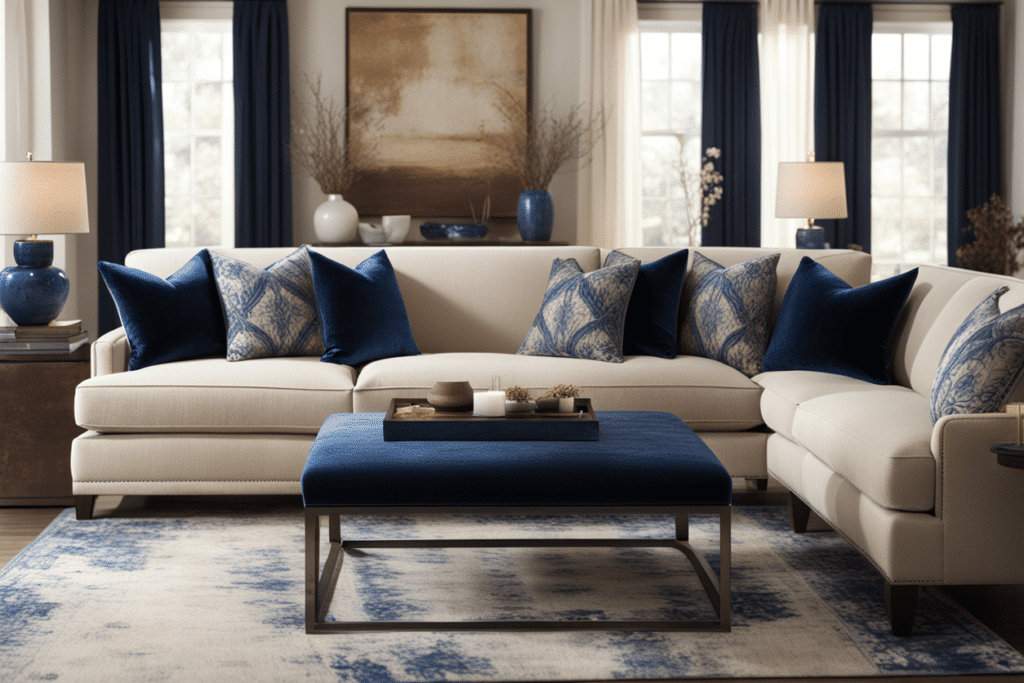
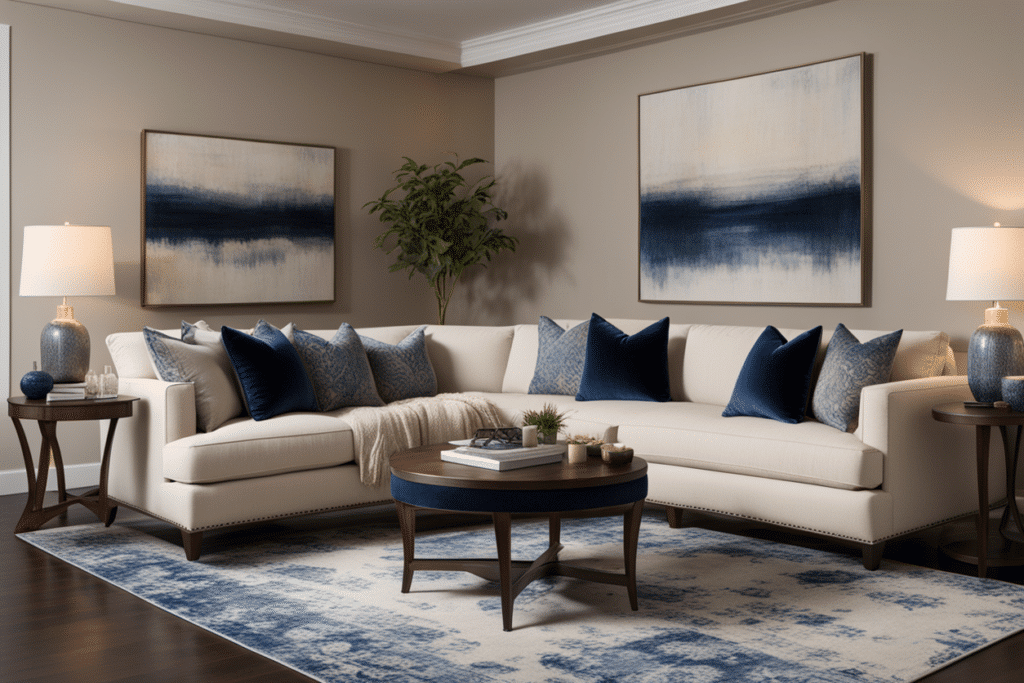
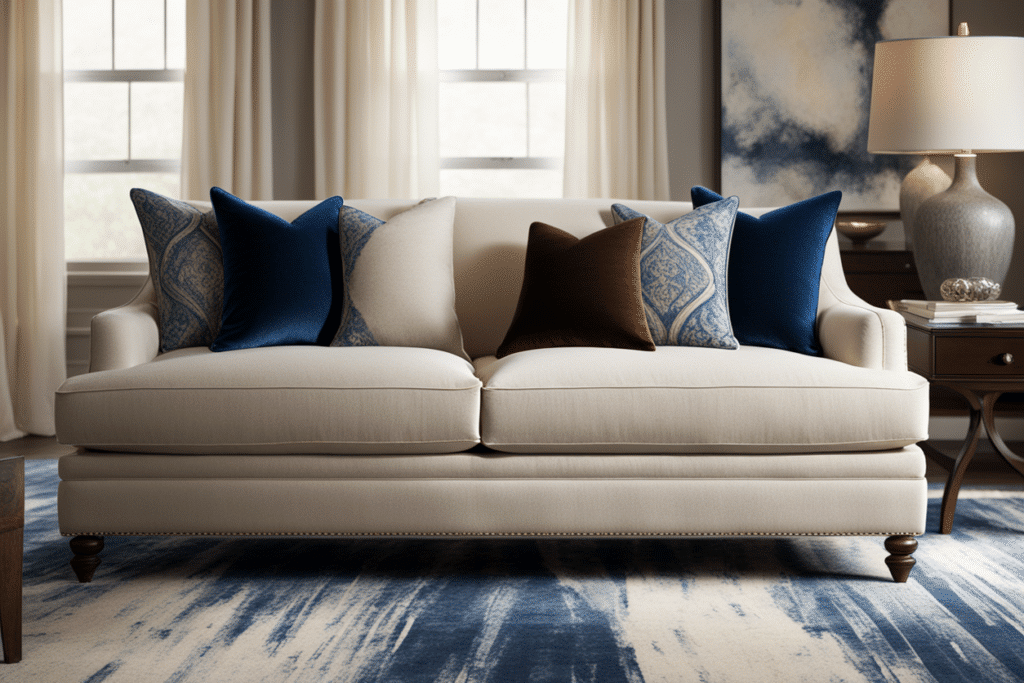
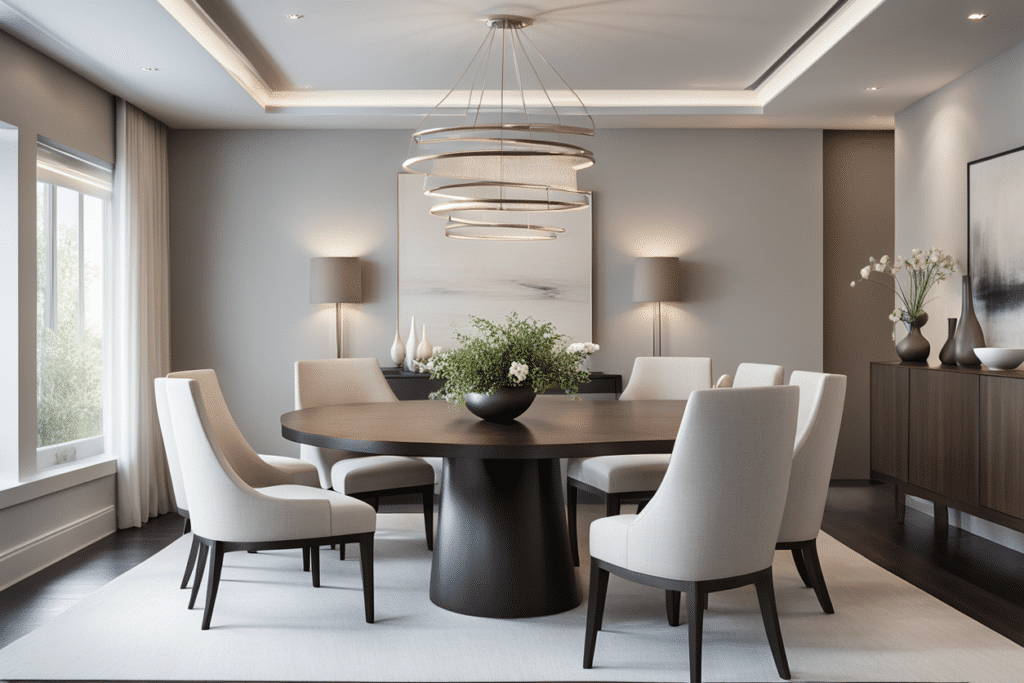
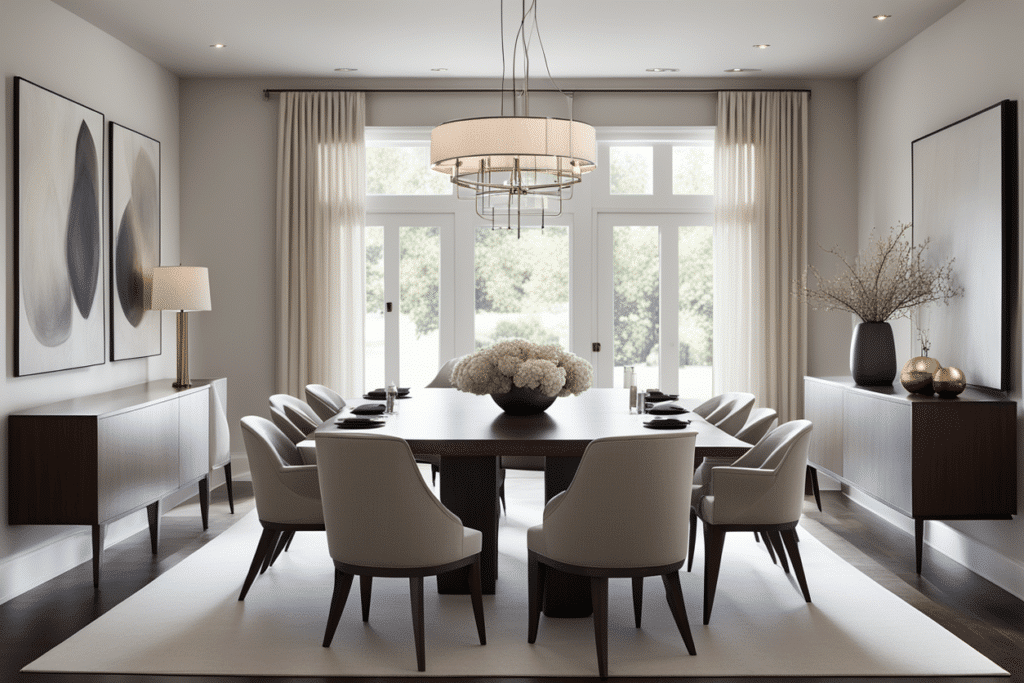
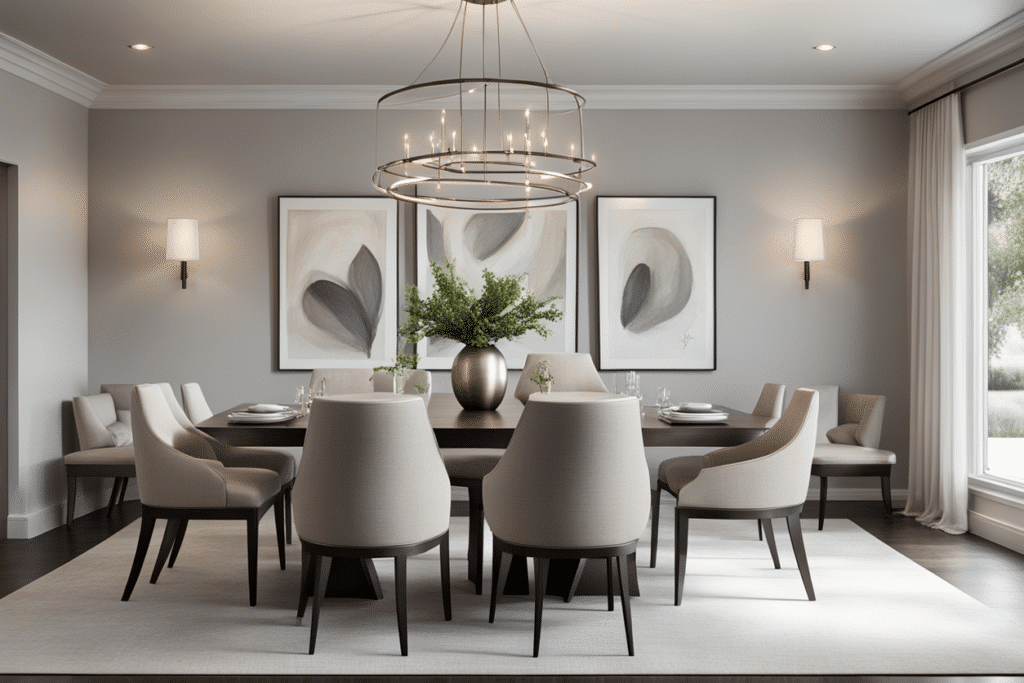
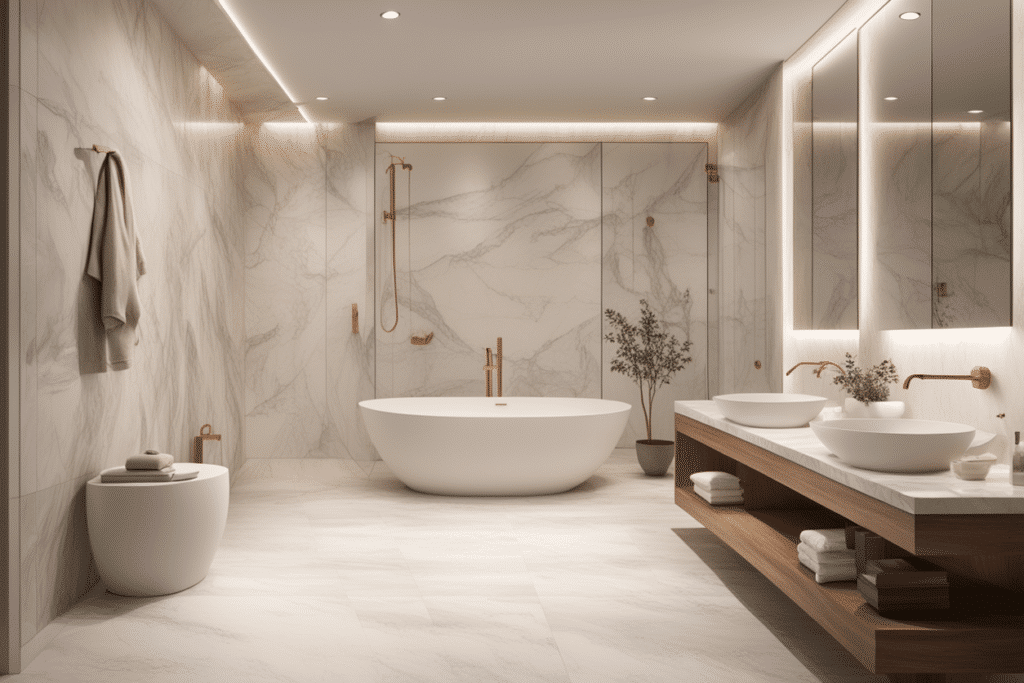
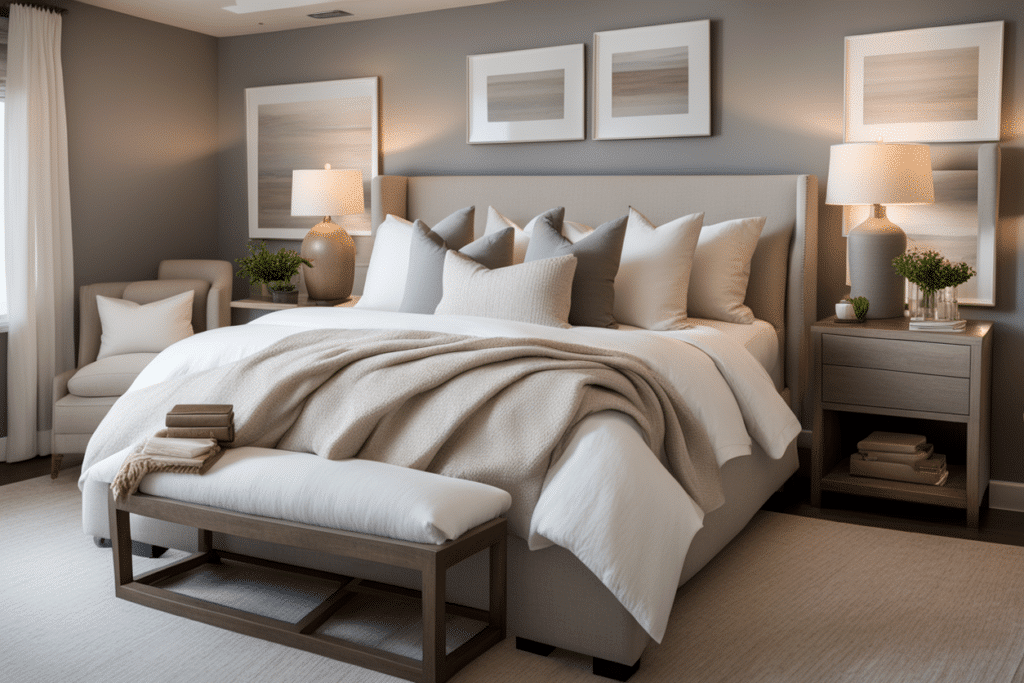
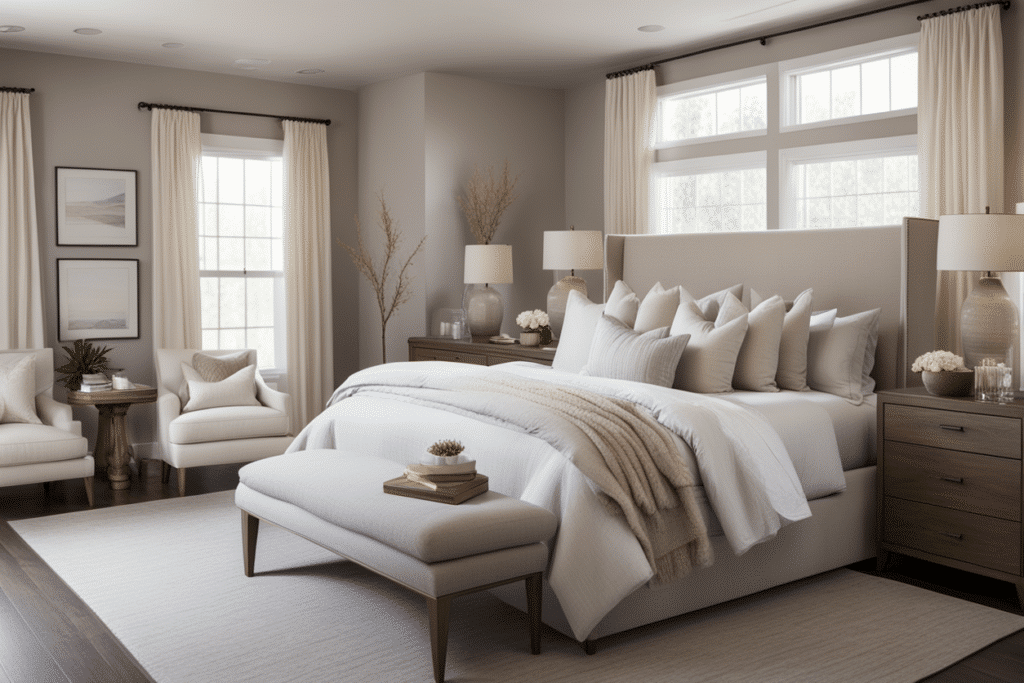
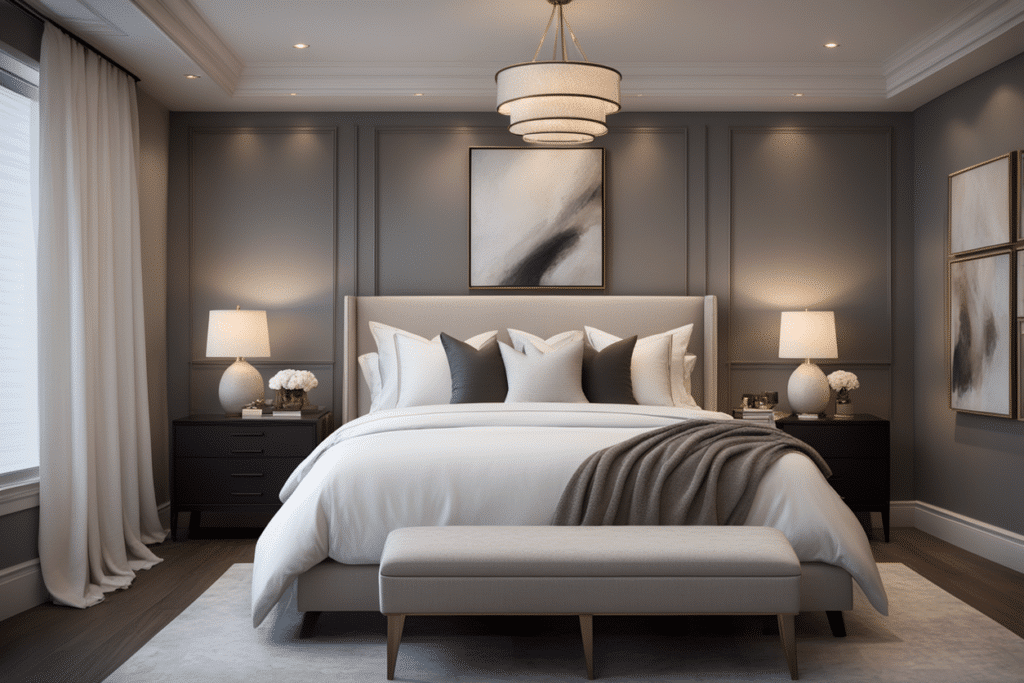
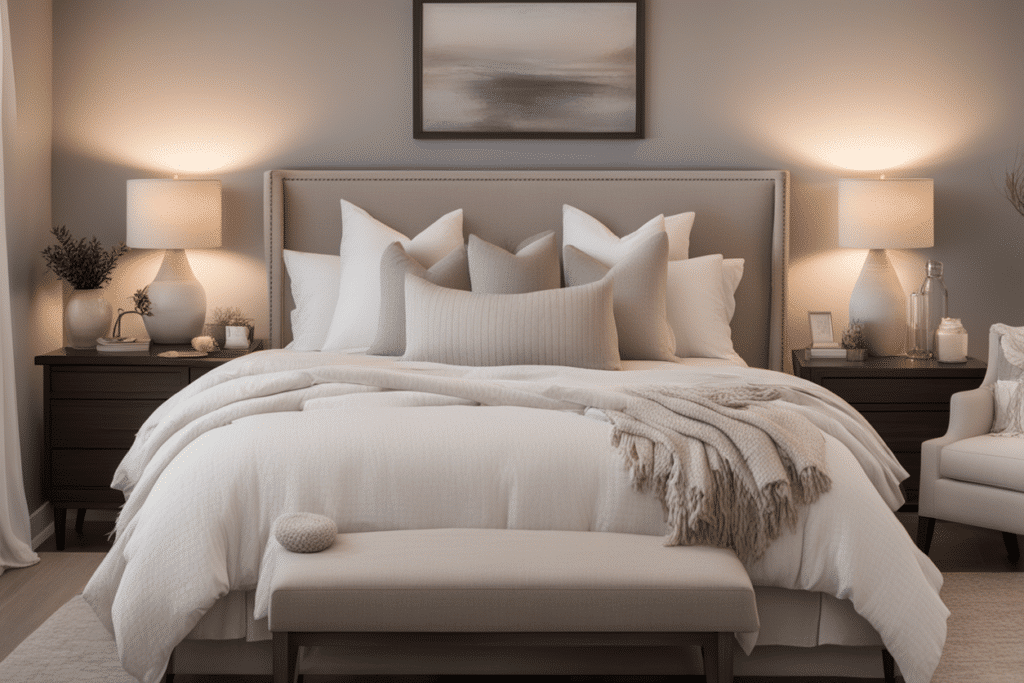
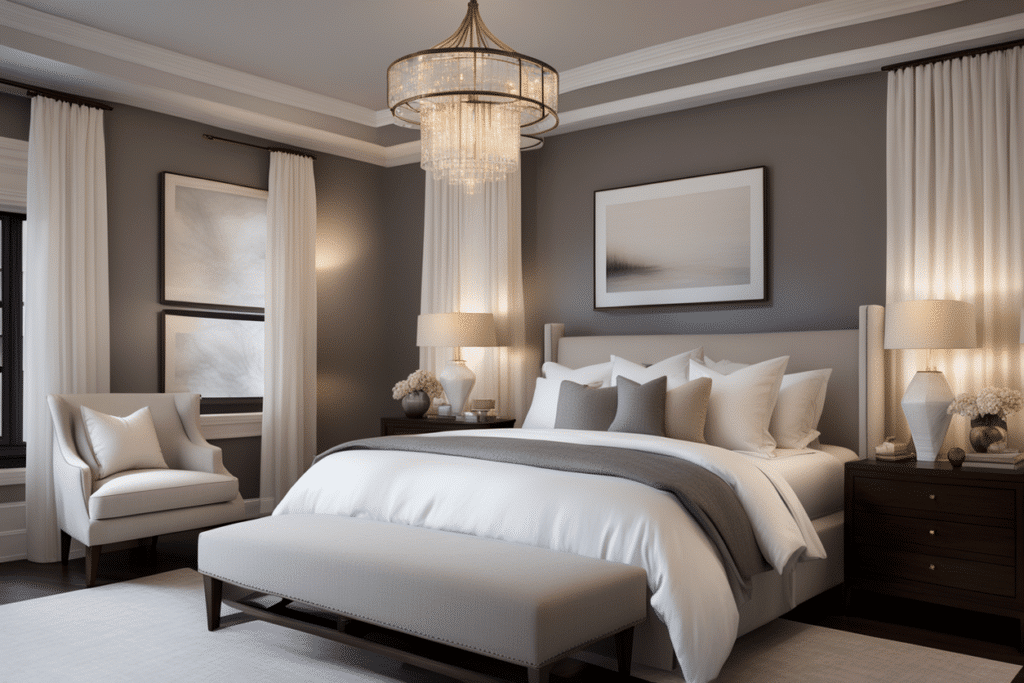

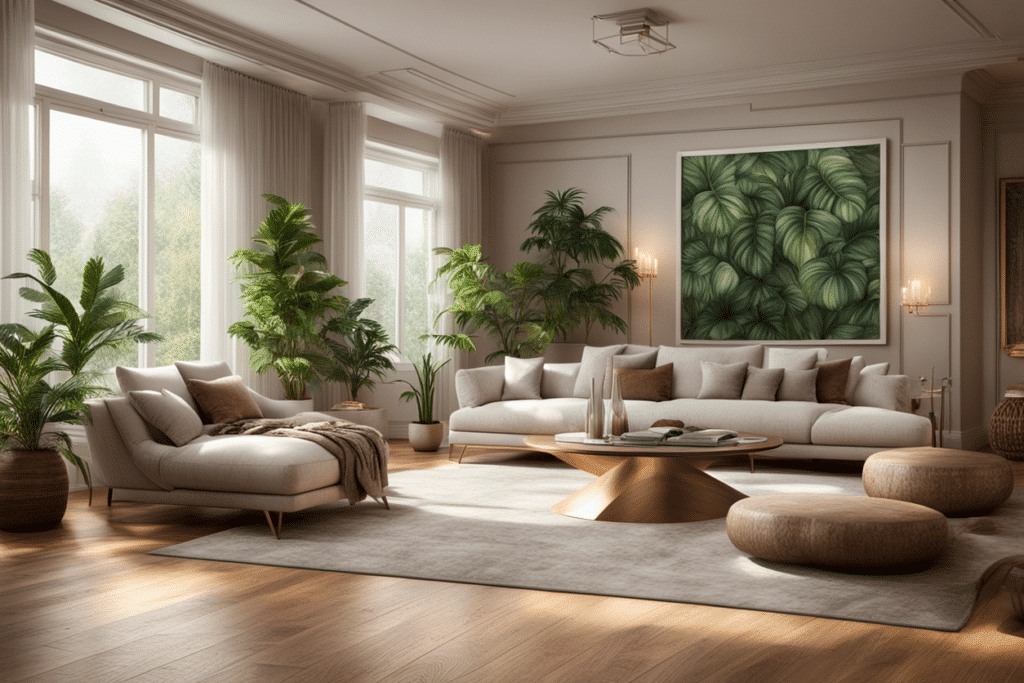
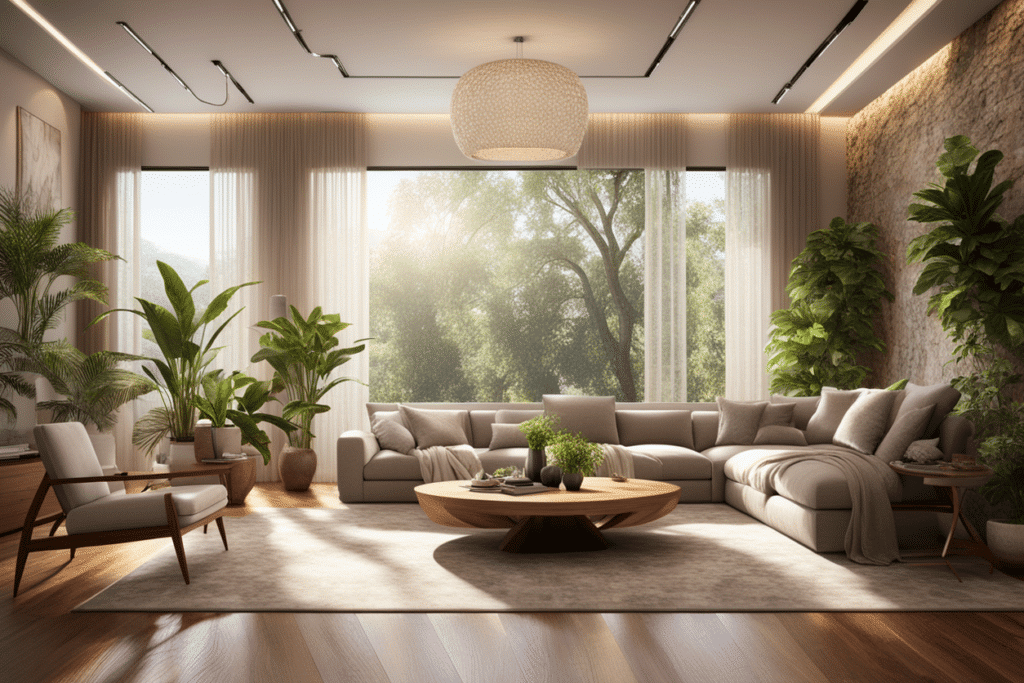
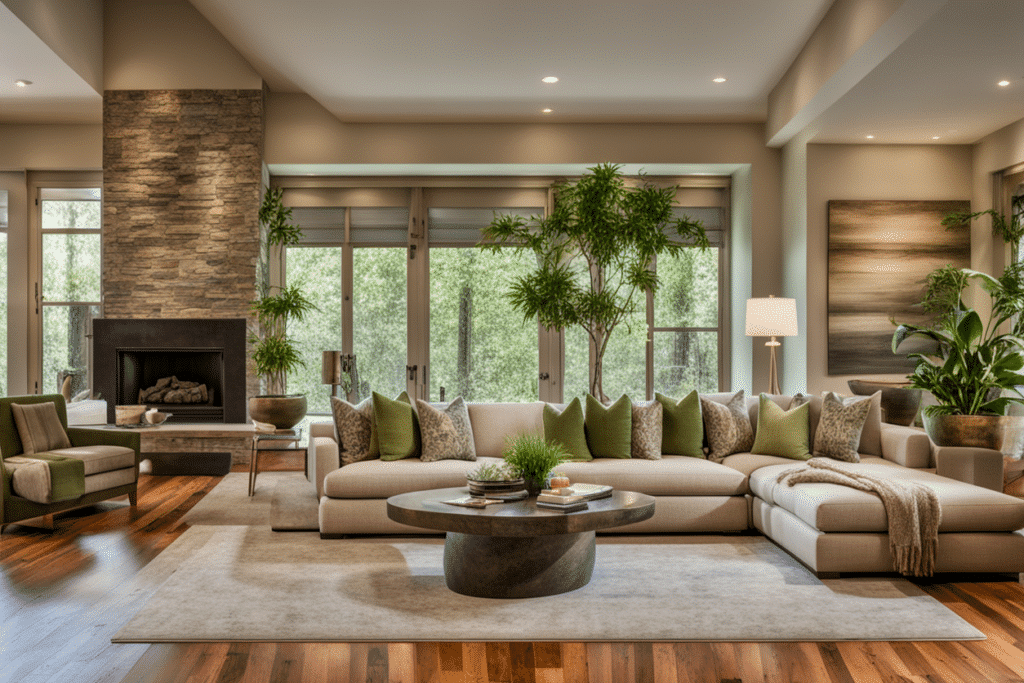

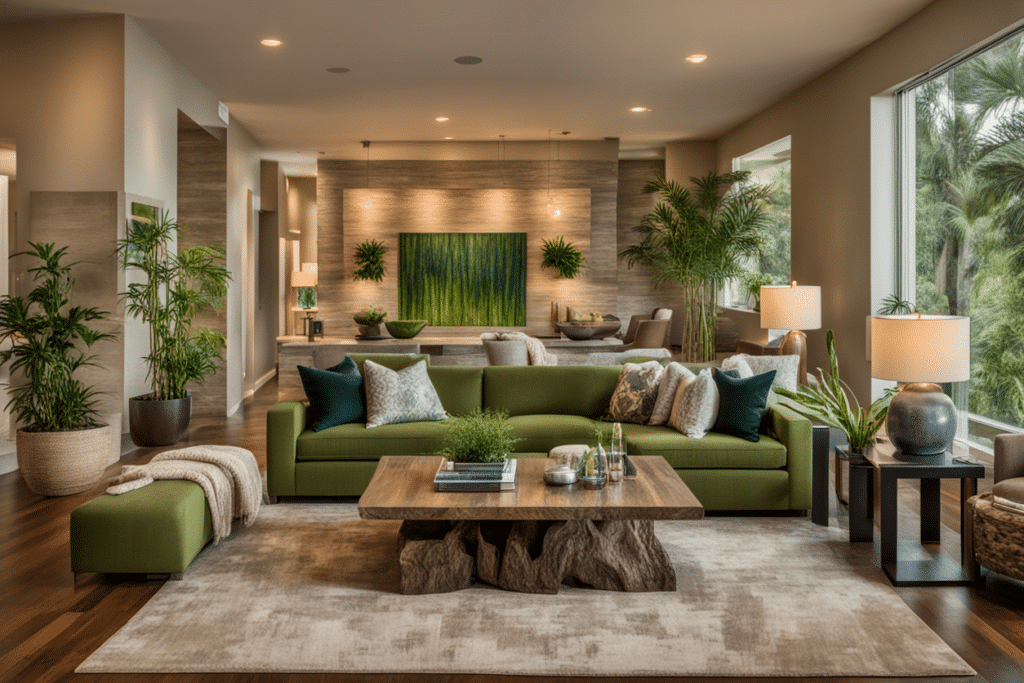
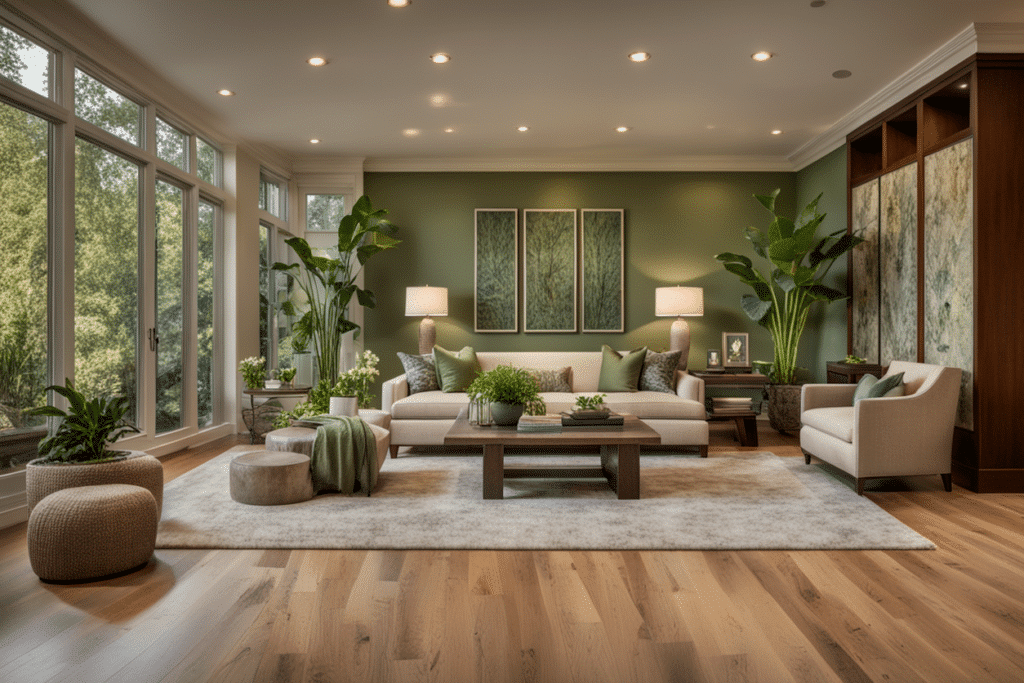
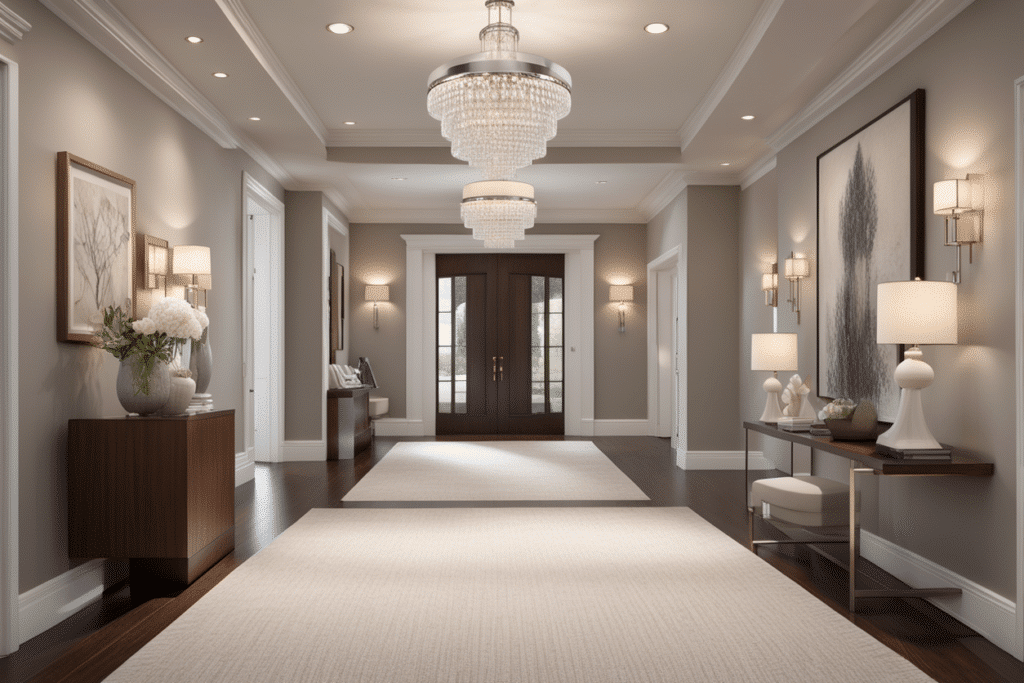
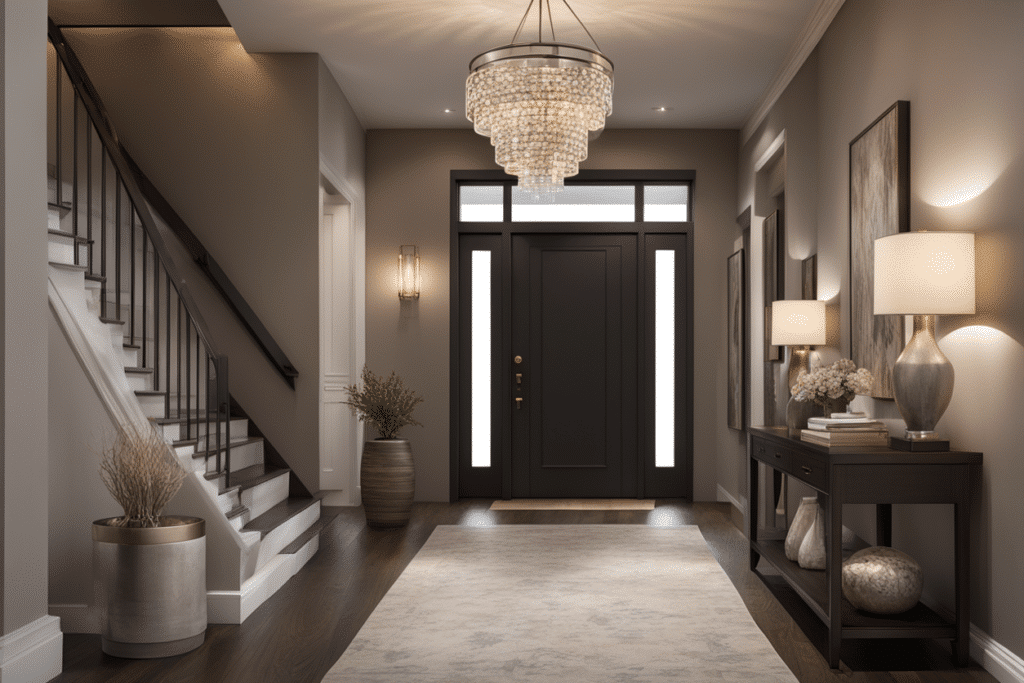
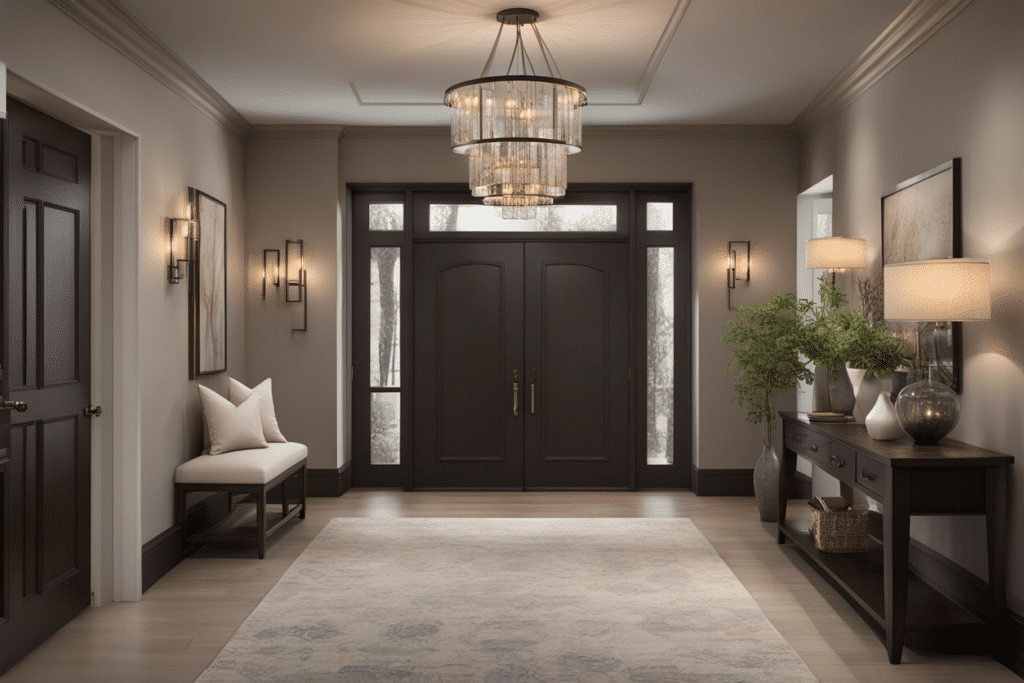
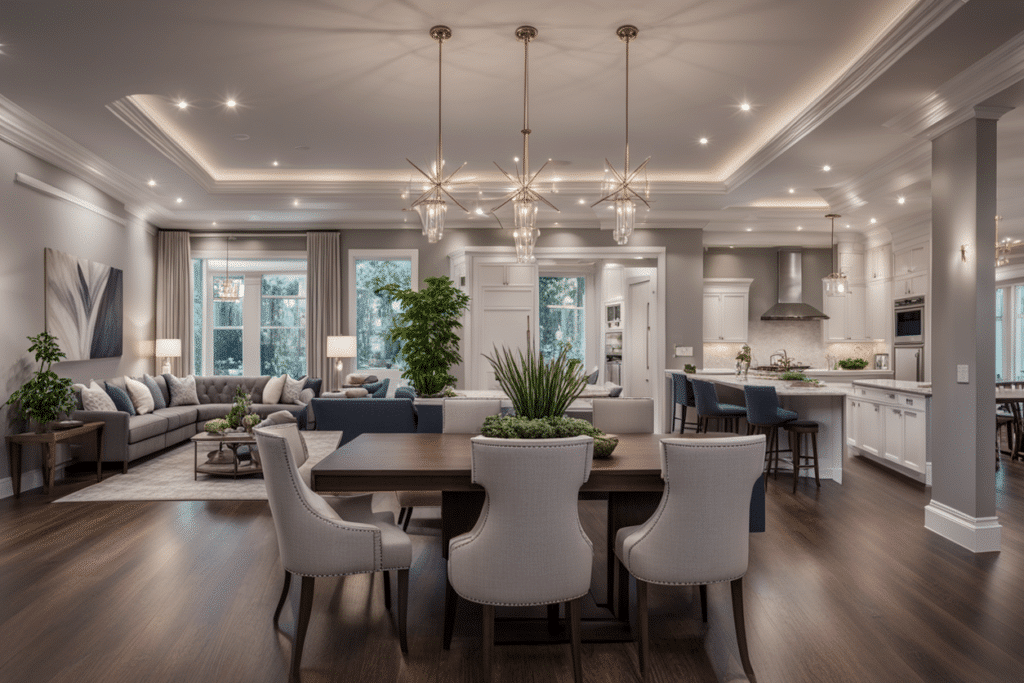
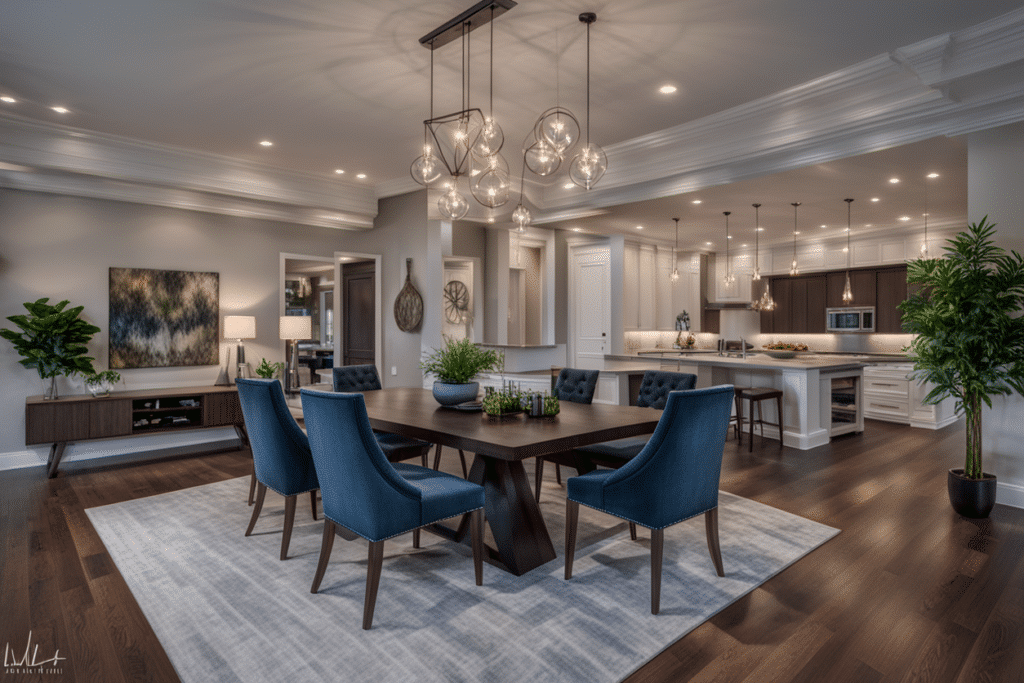
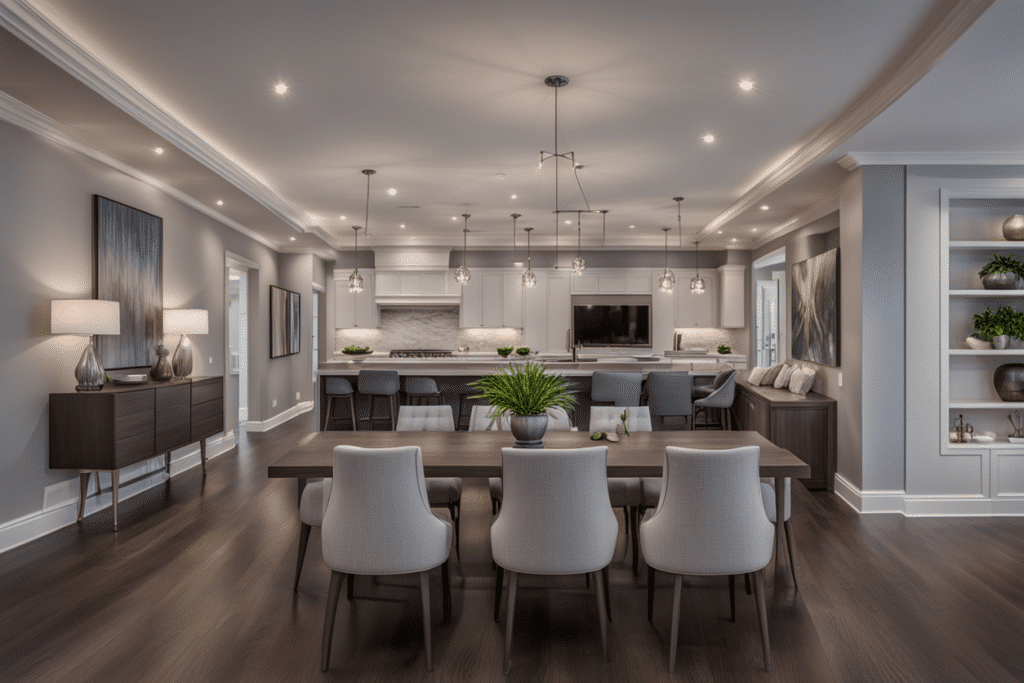
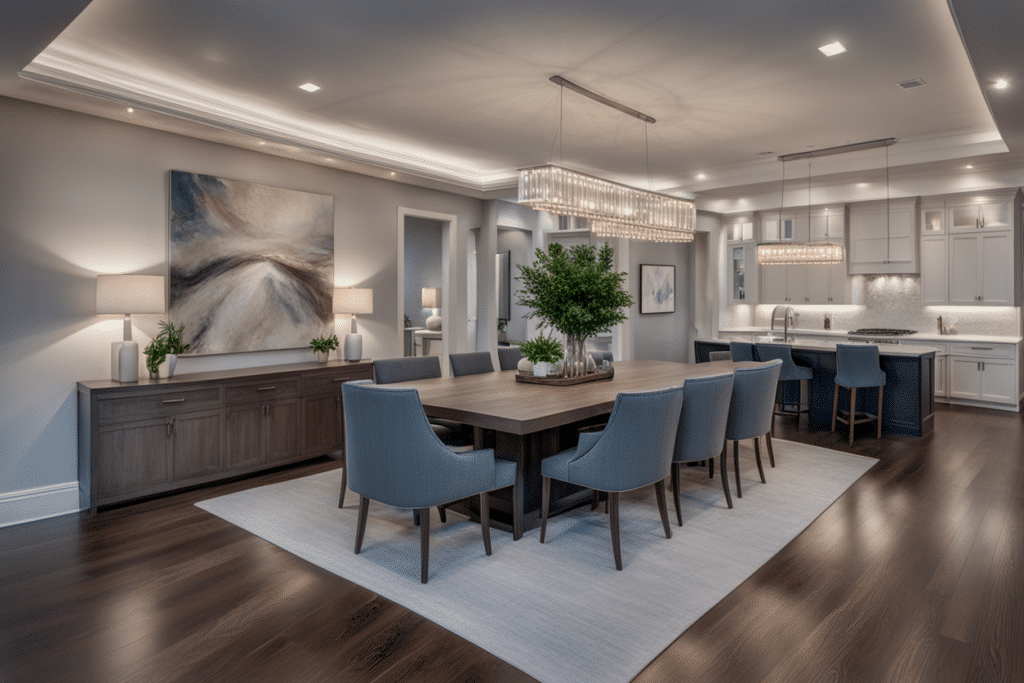
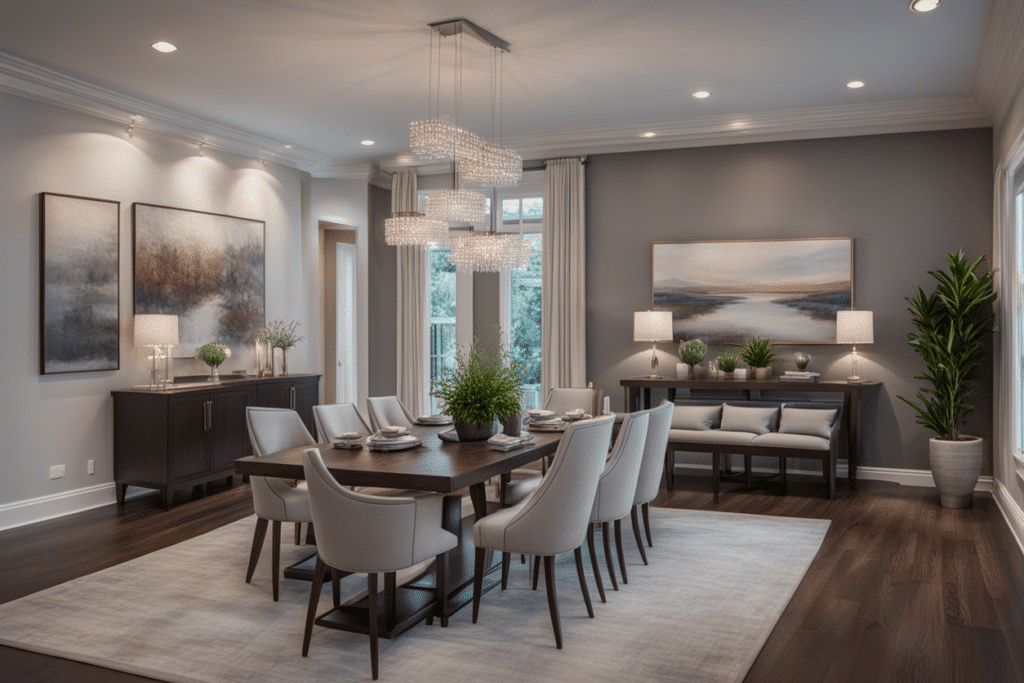
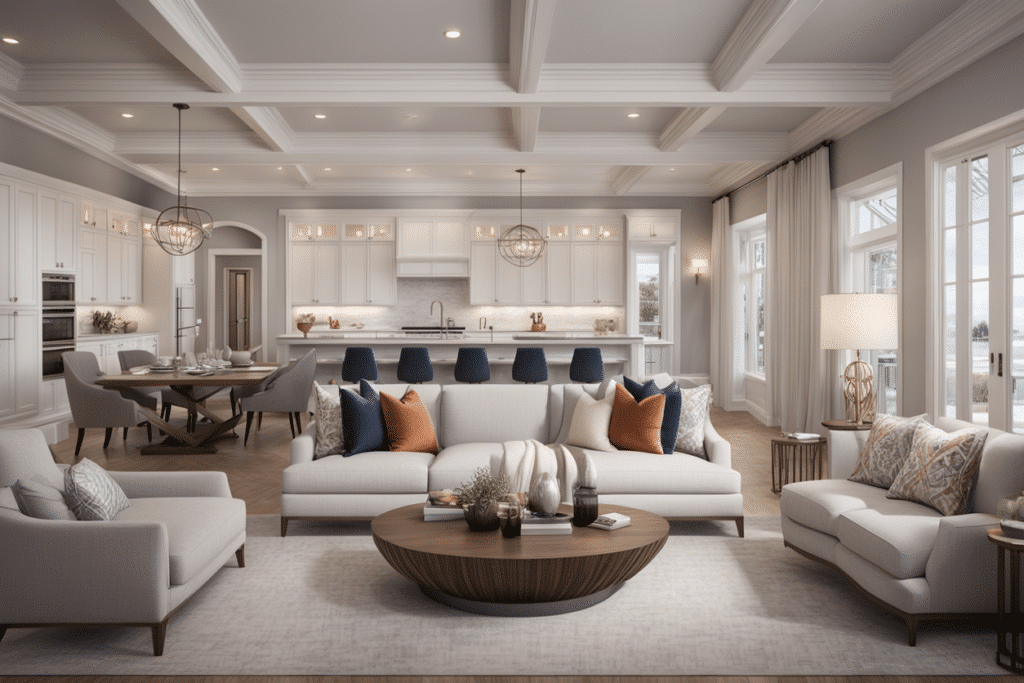
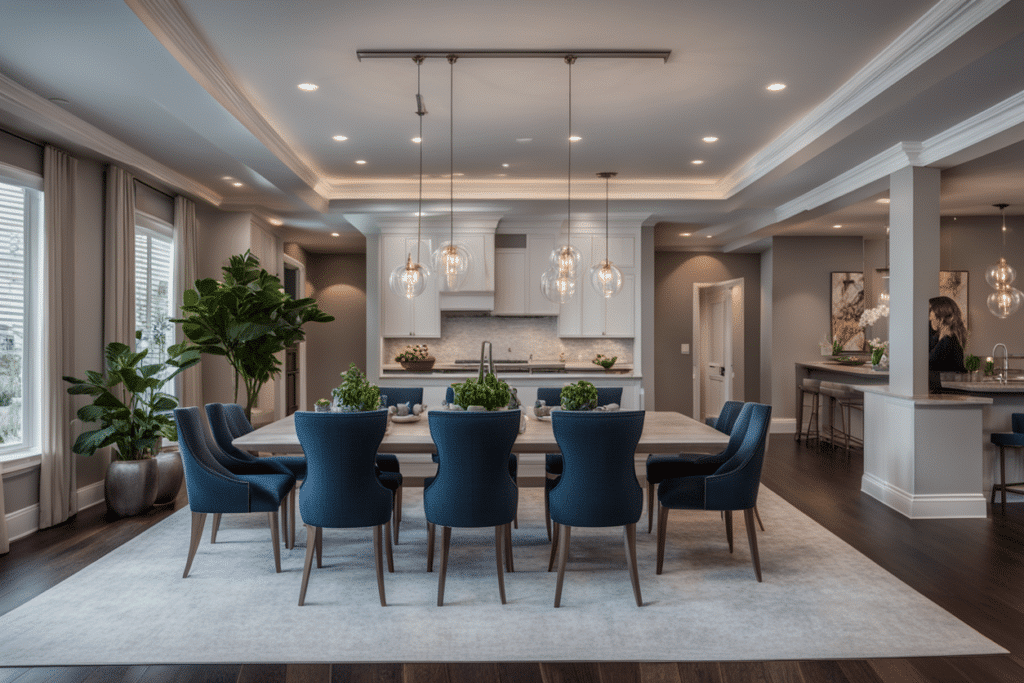

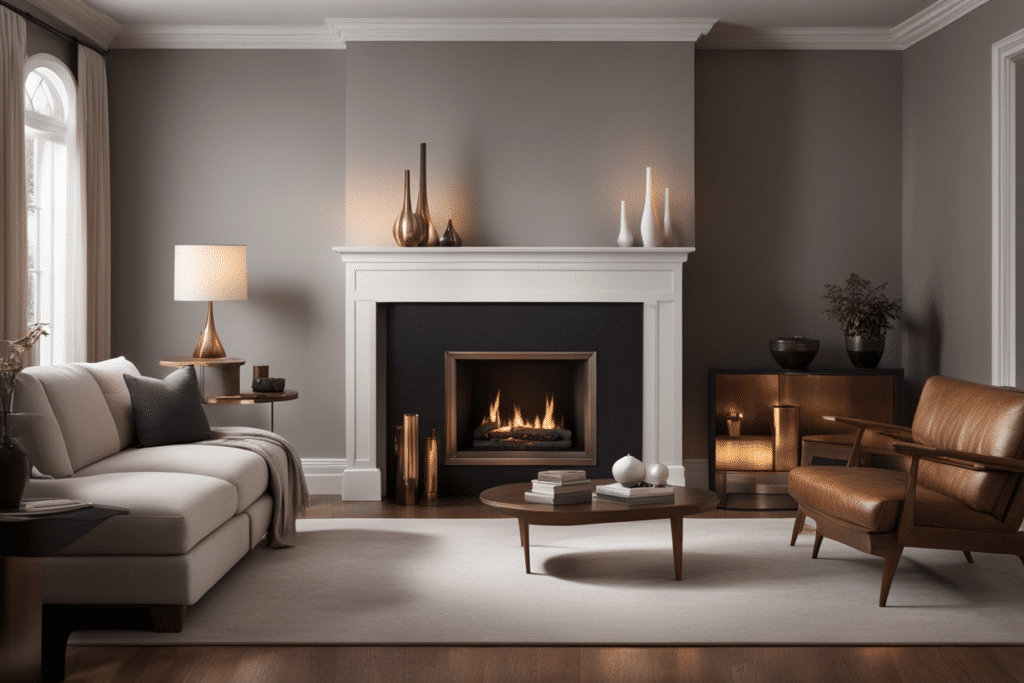
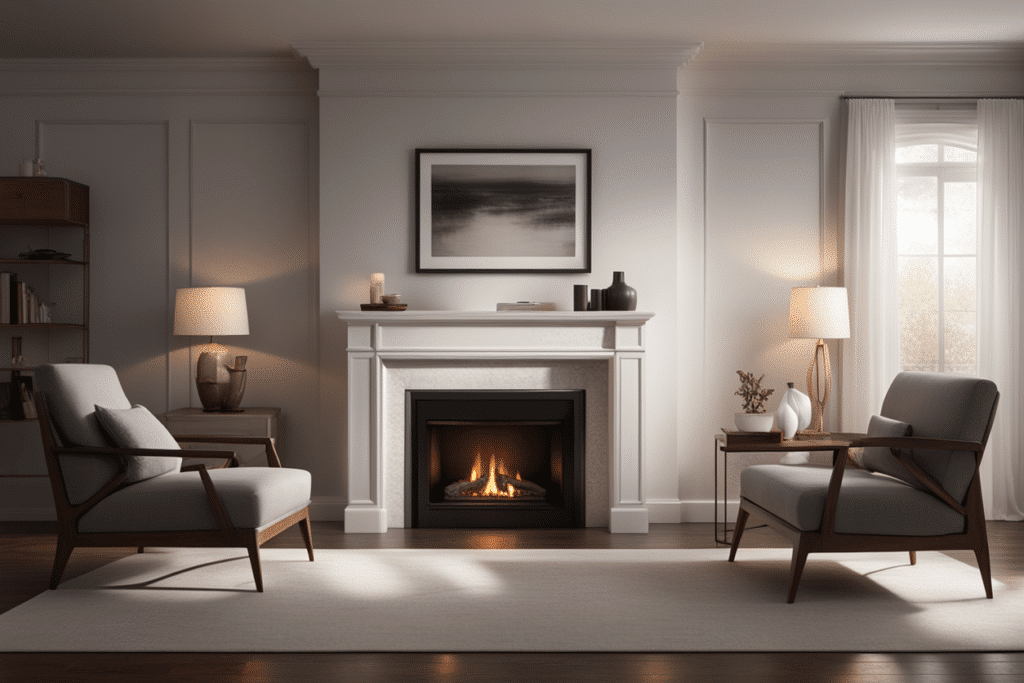
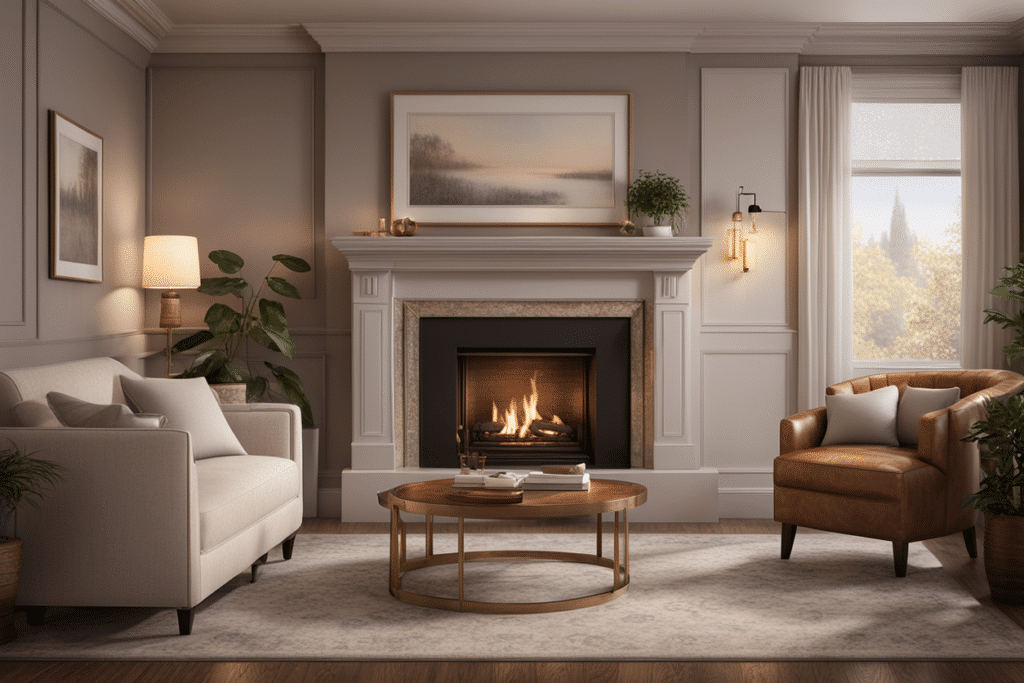
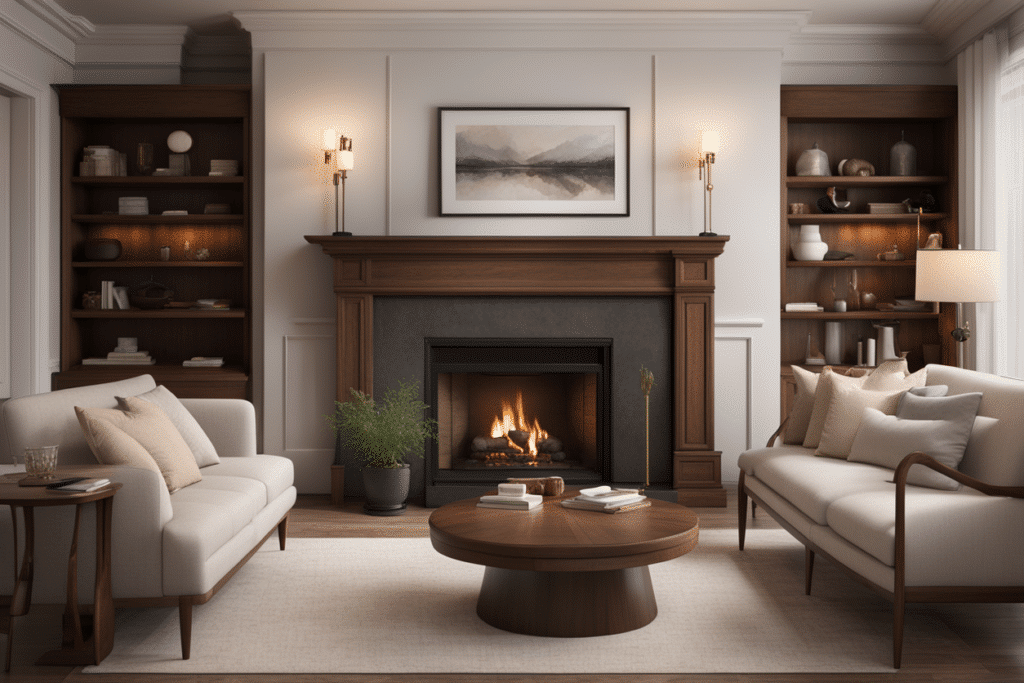
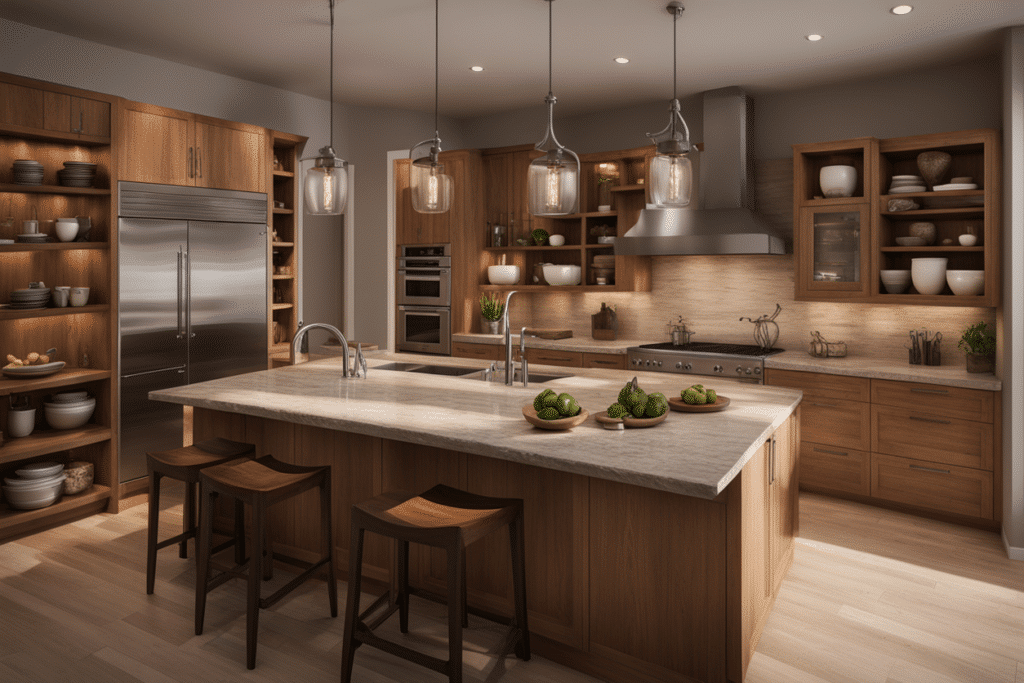
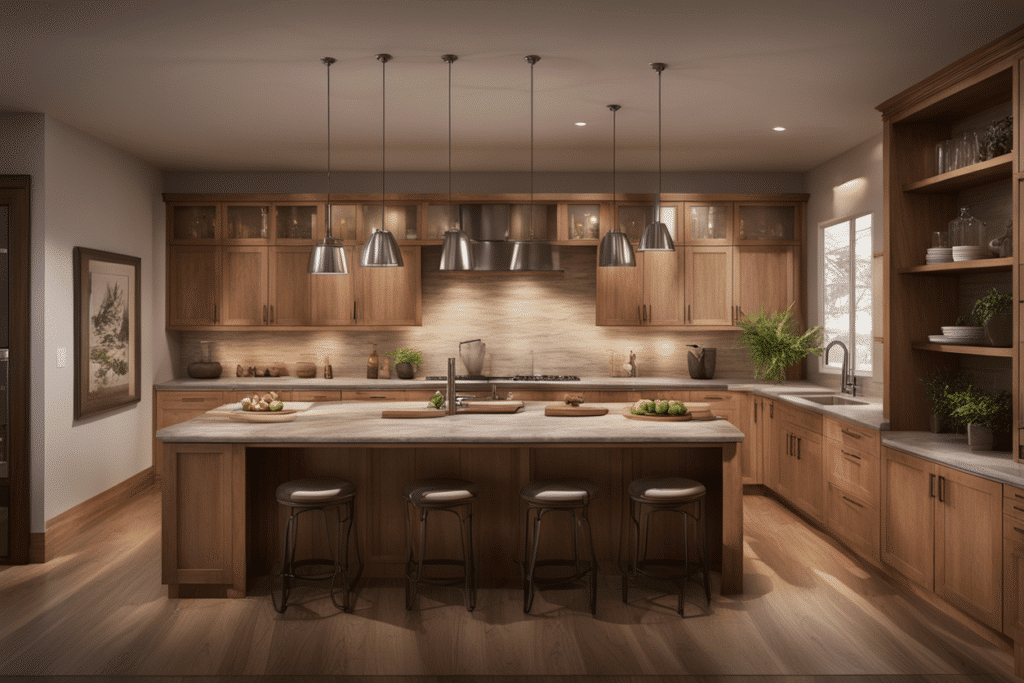


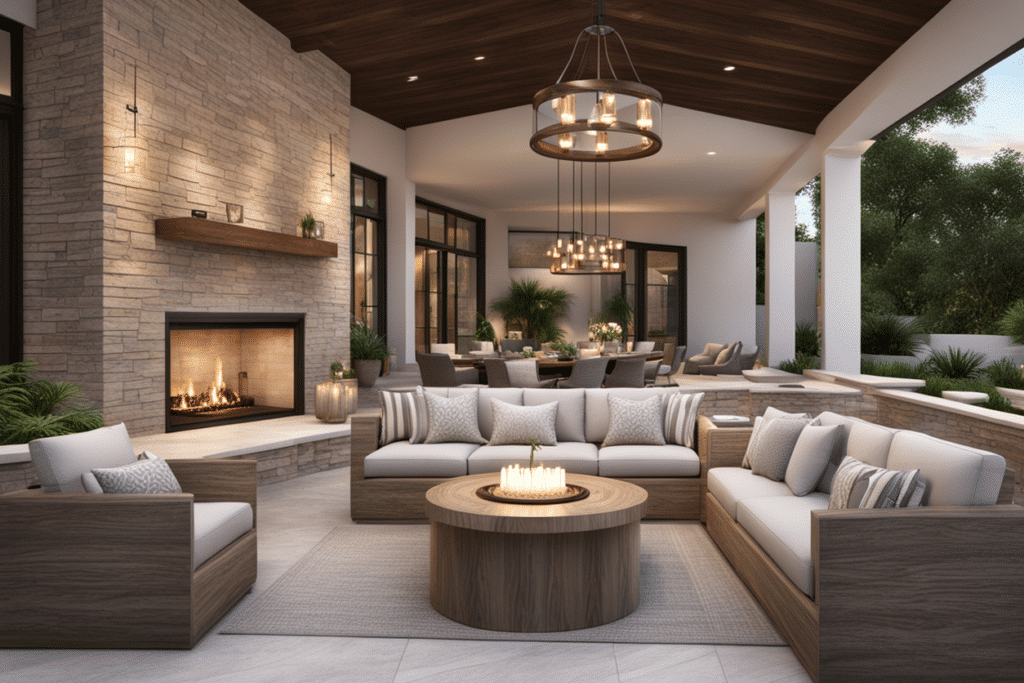
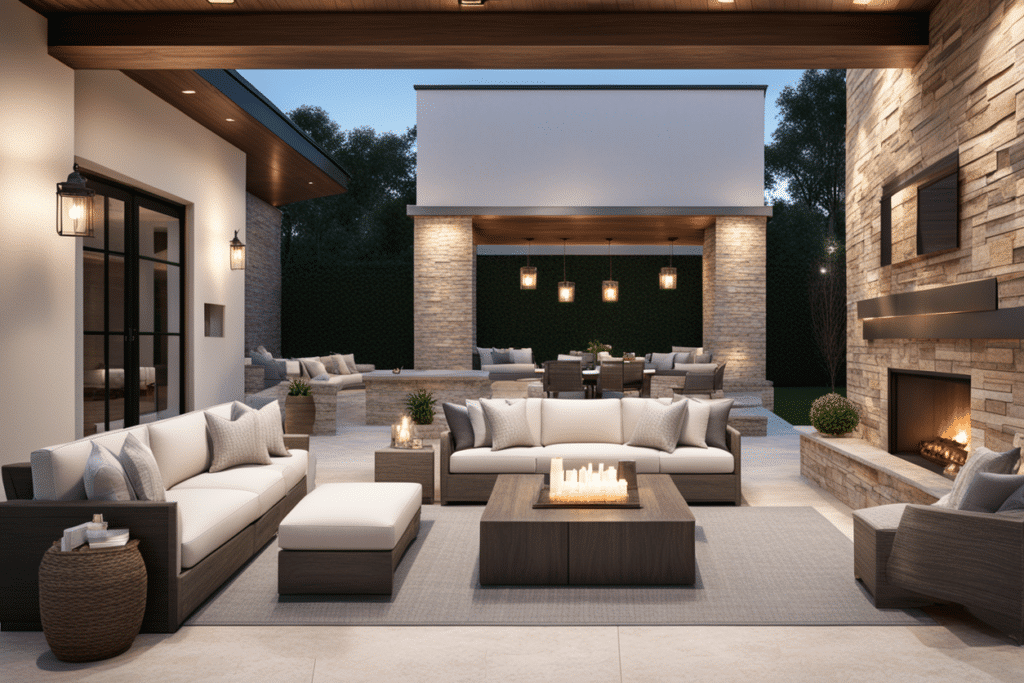
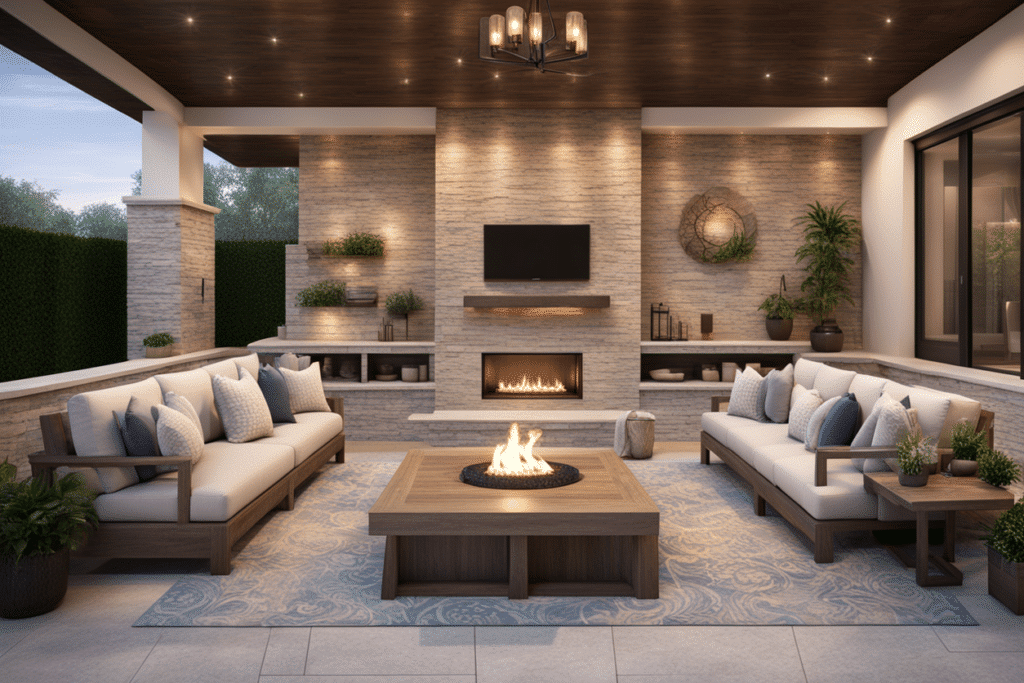
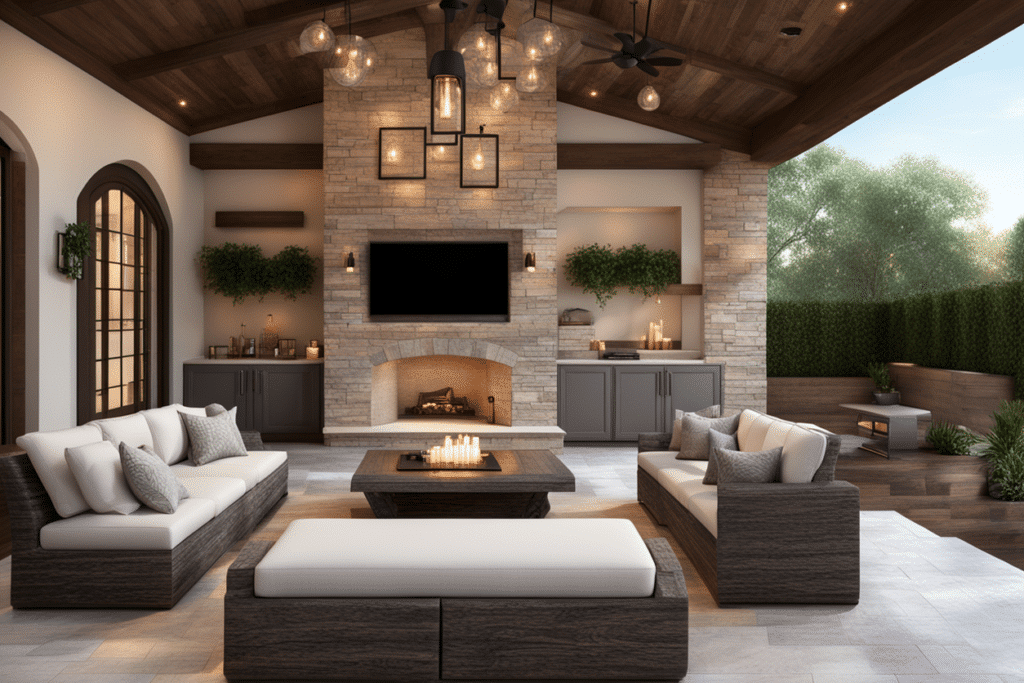
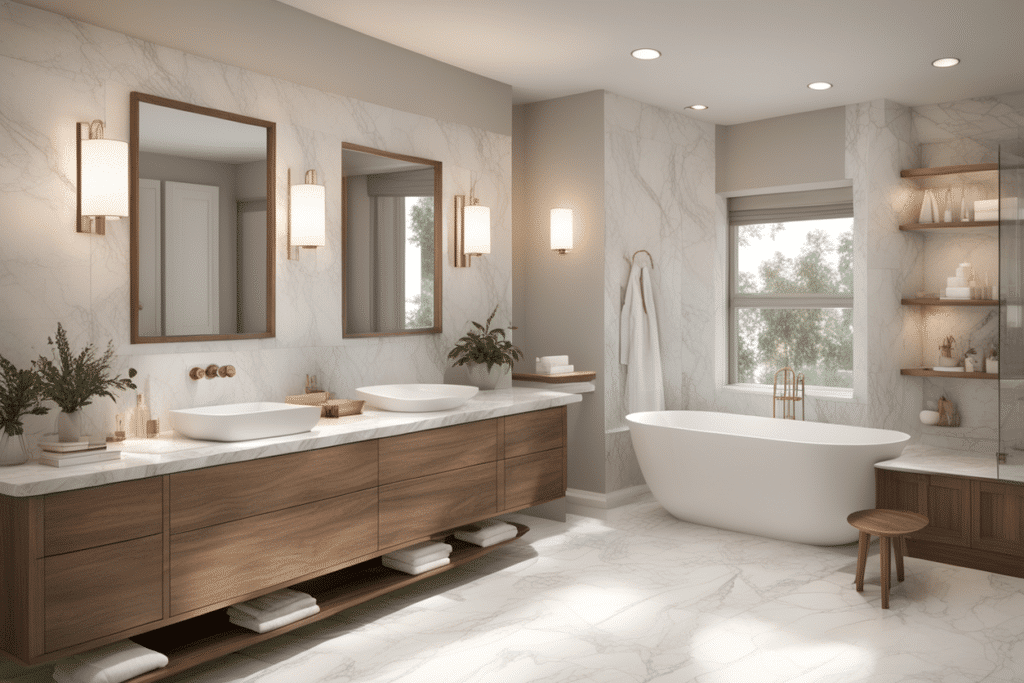
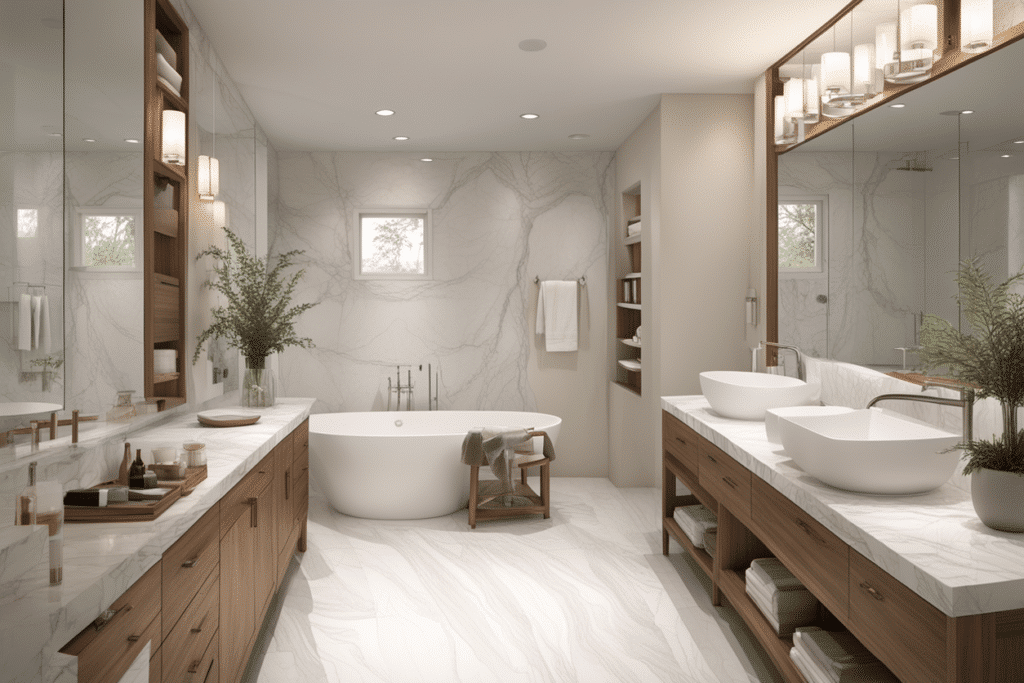
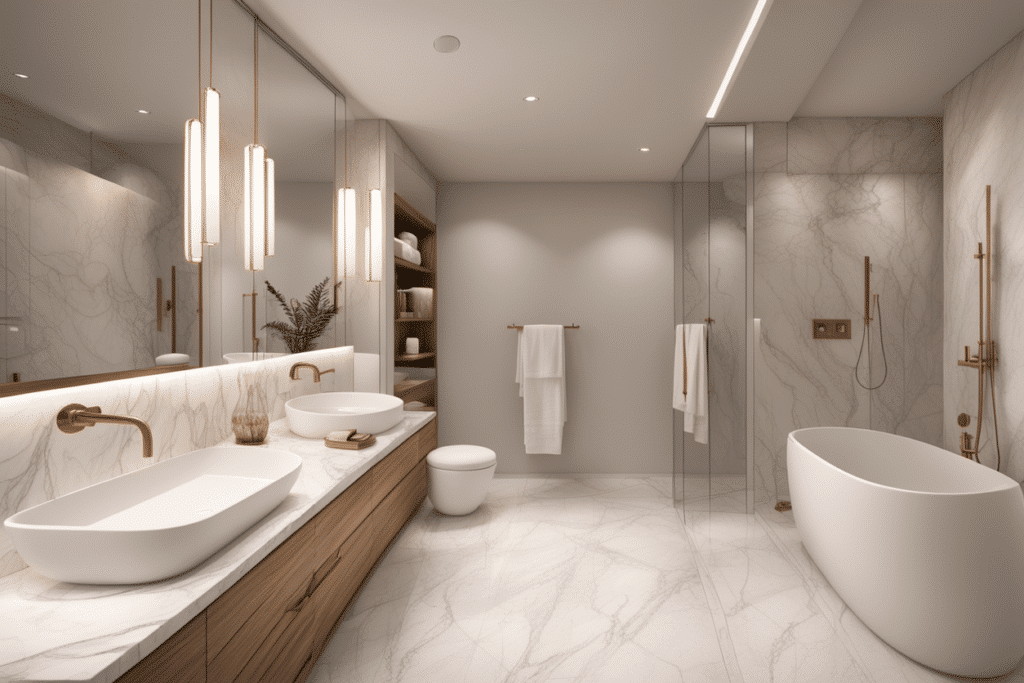
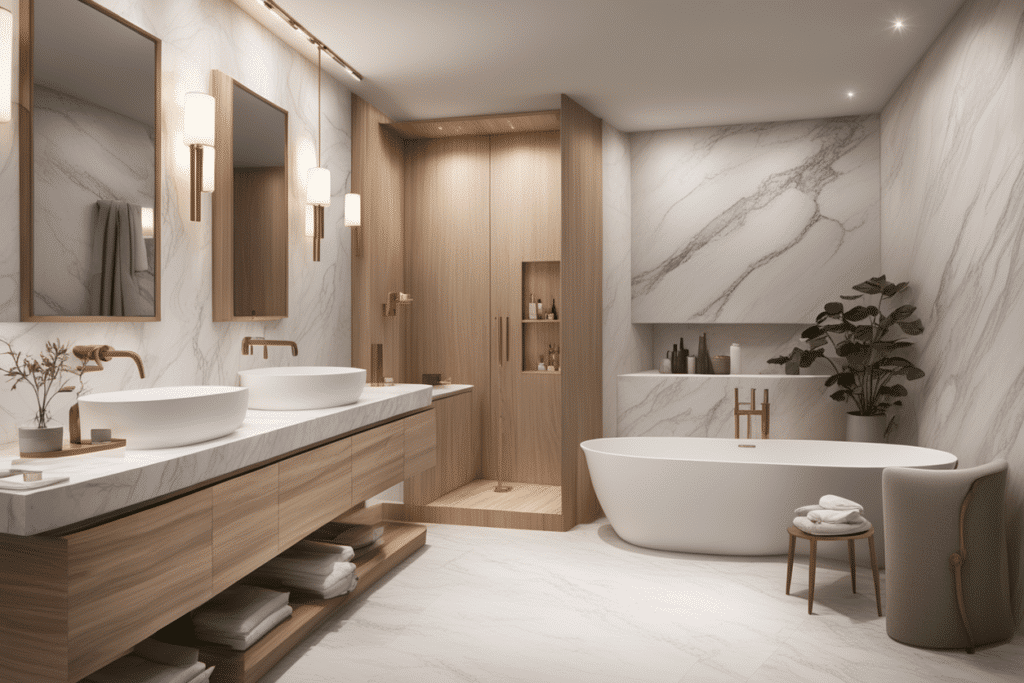
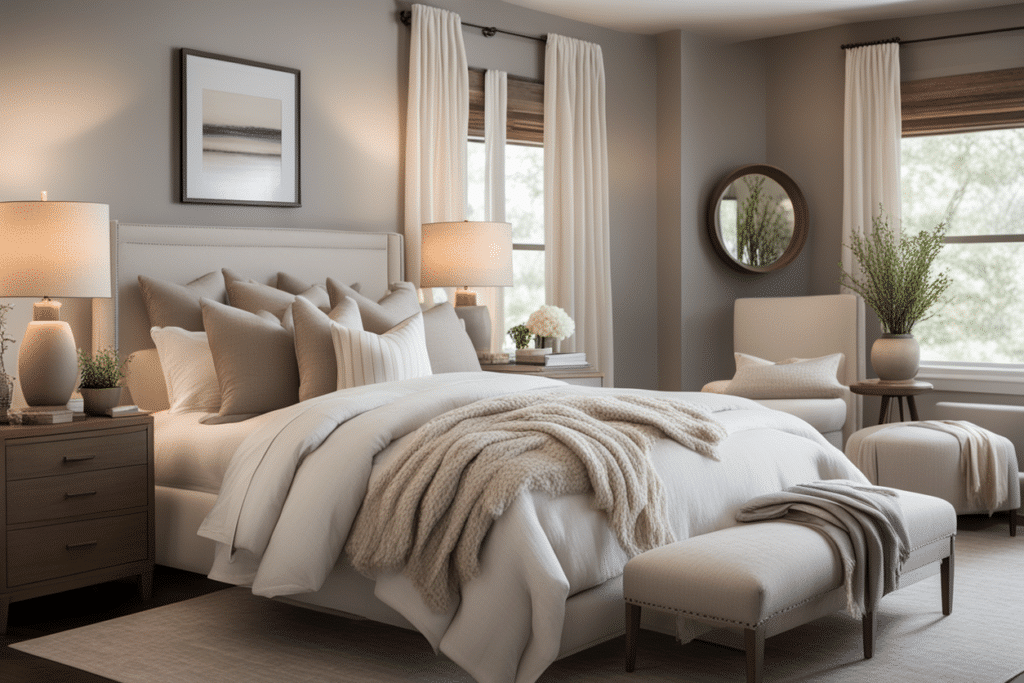
Embracing transitional style allows you to create a timeless and current home. By focusing on balance, comfort, and thoughtfully curated design elements, you can achieve a sophisticated and inviting space that truly reflects your personal taste.